|

HOME |
ABOUT | INDEX |
NEWS |
FACEBOOK |
CONTACT
REPORTS
Research | Polls | Surveys

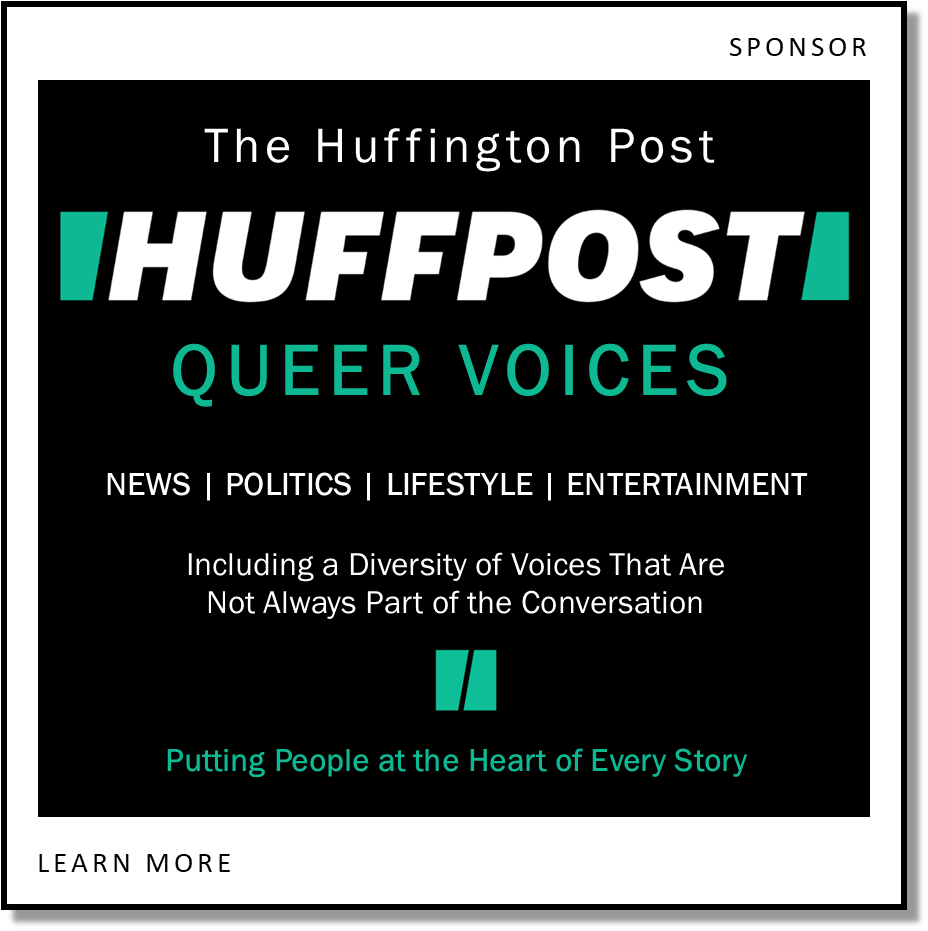
Research|Data
News Reports
Terminology and Definitions
Frequently Asked Questions
Misinformation and Misconceptions
Historical Data

Under Fire: War on LGBTQ
People in America
It could be easy to think that LGBTQ people are
continuing to move toward acceptance and equality, but
in fact, the opposite is true. LGBTQ people in America
are under attack like never before. Certainly, there has
been increased media attention to so-called “Don’t Say
Gay or Trans” bills and efforts to censor school
curricula, ban books, ban transgender youth from playing
sports, and ban transition-related care for transgender
youth. Seeing each of these issues individually is like
focusing on a single skirmish without understanding that
they are part of a larger war against LGBTQ people in
America.
Anti-LGBTQ forces want nothing less than to eliminate
openly LGBTQ people from the fabric of society. They are
launching fast, furious, and coordinated attacks that
are astonishing in their breadth, cruelty, and flagrant
disregard for personal freedoms. In this new series, MAP
will dive deeper into each of these attacks, how
opponents are executing these attacks, and how these
attacks are impacting LGBTQ people.
There are several
different ways in which anti-LGBTQ activists are
attacking LGBTQ people and their right to exist. The
goal of these activists is to eliminate LGBTQ people
from society by:
Erasing
LGBTQ people from schools and public life.
They want to make it impossible for LGBTQ youth to be
themselves in schools—banning or fining teachers and
schools for even talking about LGBTQ people or issues,
pulling books off library shelves, and banning teachers
from supporting LGBTQ students. In short, they want
LGBTQ youth to be treated like they don’t exist, and
those who disagree will be fired, fined, or even
imprisoned.
Criminalizing and banning transition so transgender
people can’t be themselves.
Opponents want to make it impossible for transgender
people to be themselves by banning transition-related
care and criminalizing supportive parents and doctors.
They are also prohibiting transgender and nonbinary
people from updating their identity documents like birth
certificates driver's licenses, and ID cards. They are
passing policies requiring governments, schools, and
teachers to only recognize sex assigned at birth or
inaccurate pronouns.
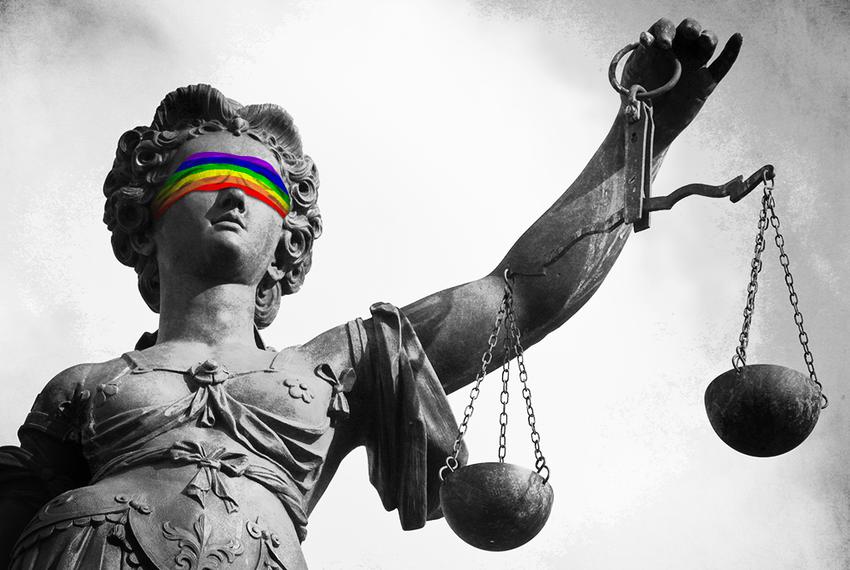
War on LGBTQ People in America: Download Full Report
LGBTQ Youth are Less Likely to Feel Depressed with
Parental Support, Study Says
Report: Queer Youth Still
Attempting Suicide at High Rate
Laverne Cox: Trans People Are Exhausted by Anti-Trans
Legislation
Queer Youth Negatively Affected by Anti-LGBTQ Laws and
Debates
With Over 100 Anti-LGBTQ Bills Before
State Legislatures, Activists Say They're Fired Up
Enshrining
inequality.
They want to preserve and bless legal inequality so that LGBTQ
people and their families will be poorer, less secure,
and face more obstacles. This includes repealing or
fighting nondiscrimination protections so that LGBTQ can
be fired or not hired, refused housing, denied service
in public places, even denied medical care, and more.
Erecting
systemic and structural barriers to make change harder.
By rolling back voting rights, doubling down on
gerrymandering, insulating lawmakers from
accountability, and much more, these opponents have made
it even harder than ever before for individuals to make
change, or to elect leaders that reflect the values held
by the majority of Americans, including support for
LGBTQ people.
Silencing
supporters.
Anti-LGBTQ opponents also want to silence, sue, fine and
penalize parents, teachers, doctors, companies and
others who are LGBTQ allies.
In all these efforts, opponents are using increasingly
dangerous and inflammatory rhetoric to vilify LGBTQ
people. Anti-LGBTQ activists paint LGBTQ people as
predators and foment violence against them. The
resurgence of the “groomer” narrative—that LGBTQ people
are explicitly sexualizing and abusing children—is
particularly troubling and dangerous. These harmful
narratives seek to push LGBTQ people to the corners of
society and have them fear for their lives.
[Source: Movement Advancement Project, February 2023,
Under Fire: The War on LGBTQ People in America]
Less GOP and More LGBTQ: Gen Z is More
Likely to be Queer than Republican, Survey Reveals
Poll Shows Gen Z Adopting Their Own Labels for Sexuality
Government Report: LGBTQ Youth Information
New Research: Gay Men and Stress
GLAAD Annual Report: Accelerating Acceptance 2019
Research Report: LGBTQ
Leisure Activities
More Than 20 Million Americans Identify as LGBTQ,
According to Report
National Survey: State of
the LGBTQ Community in 2020
Pew Research Center: Global Divide on Homosexuality
Government Report: LGBTQ Youth Information
Kids with Lesbian Parents Are Just as
Healthy As Other Kids, Study Finds
New Research: Gay Men and Stress
GLAAD Annual Report: Accelerating Acceptance 2019
LGBTQ Voices: Learning
From Lived Experiences
Pew Research Center: LGBTQ Social and Demographic Trends
National Survey: State of
the LGBTQ Community in 2020
LGBTQ Voices: Learning
From Lived Experiences
More Than 20 Million Americans
Identify as LGBTQ, According to Report
At least 20 million people in the US identify as LGBTQ+,
according to a report released in Dec 2021 from the
Human Rights Campaign Foundation.
The group's report — “We Are Here: Understanding the
Size of the LGBTQ Community” — found that 8 percent of
respondents of the US Census Bureau’s Household Pulse
Survey reported that they identify as “LGBTQ,” and an
additional 2 percent said their sexual orientation was
not gay, lesbian, bisexual, or straight. That number
could include those who identify as pansexual, asexual,
or as something else.
That survey also suggests that about 2 million people in
the country identify as trans, which HRC noted is higher
than previous estimates. Out of those identifying as
LGBTQ, bisexual people represented the majority with
about 4 percent of respondents.
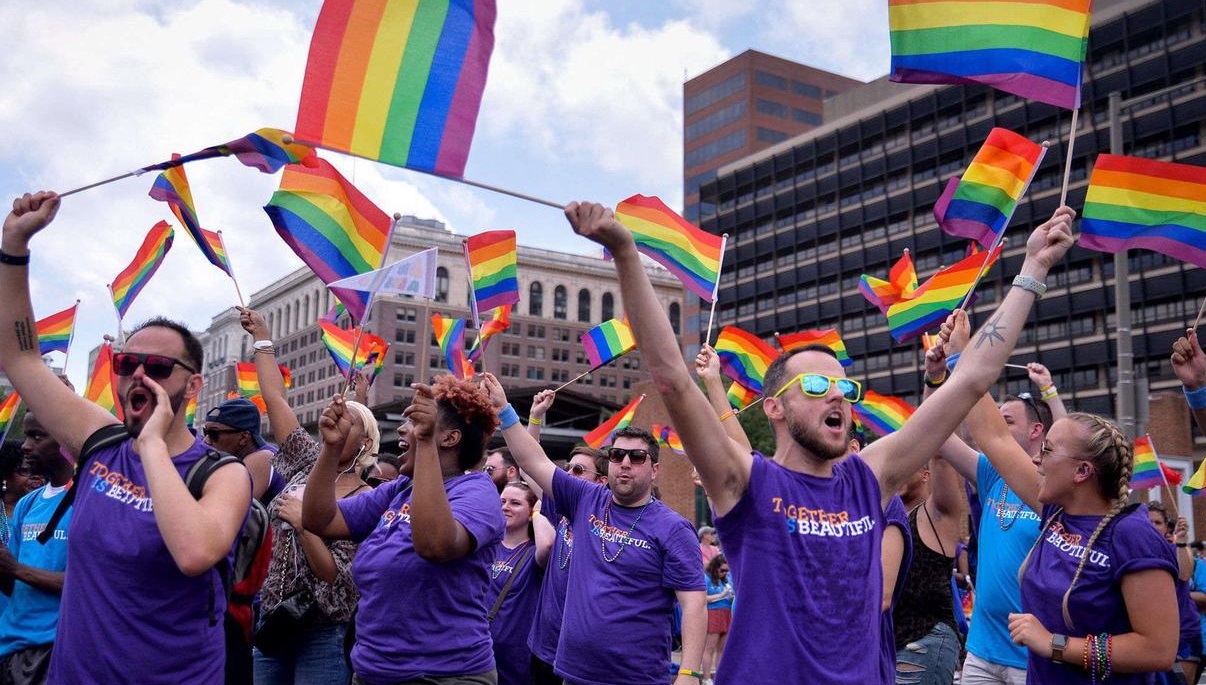
LGBTQ People in the US: Select Findings from the
Generations and TransPop Studies
New Poll: Americans Identifying as LGBTQ More Than Ever
National Survey: State of
the LGBTQ Community in 2020
Pew Research Center: Global Divide on Homosexuality
Government Report: LGBTQ Youth Information
“LGBTQ people are here — in every town, in every city,
in each and every ZIP code. This data shows what we’ve
suspected: Our community is larger and more widespread
than we could have known up to this point, ” said Human
Rights Campaign Interim President Joni Madison in a
press release. “We’re proud to bring this data to light
and set the stage for a future where all the millions of
LGBTQ people in America enjoy full legal and lived
equality.”
Madison added: “I commend the Biden administration and
the US Census Bureau for finally allowing researchers to
count us and look forward to seeing the LGBTQ community
counted in further studies.”
California and Texas had the largest number of LGBTQ
residents with 2.6 million and 1.7 million respectively.
The study found that states less populated than those
two tended to have a higher percentage of their
population identify as LGBTQ.
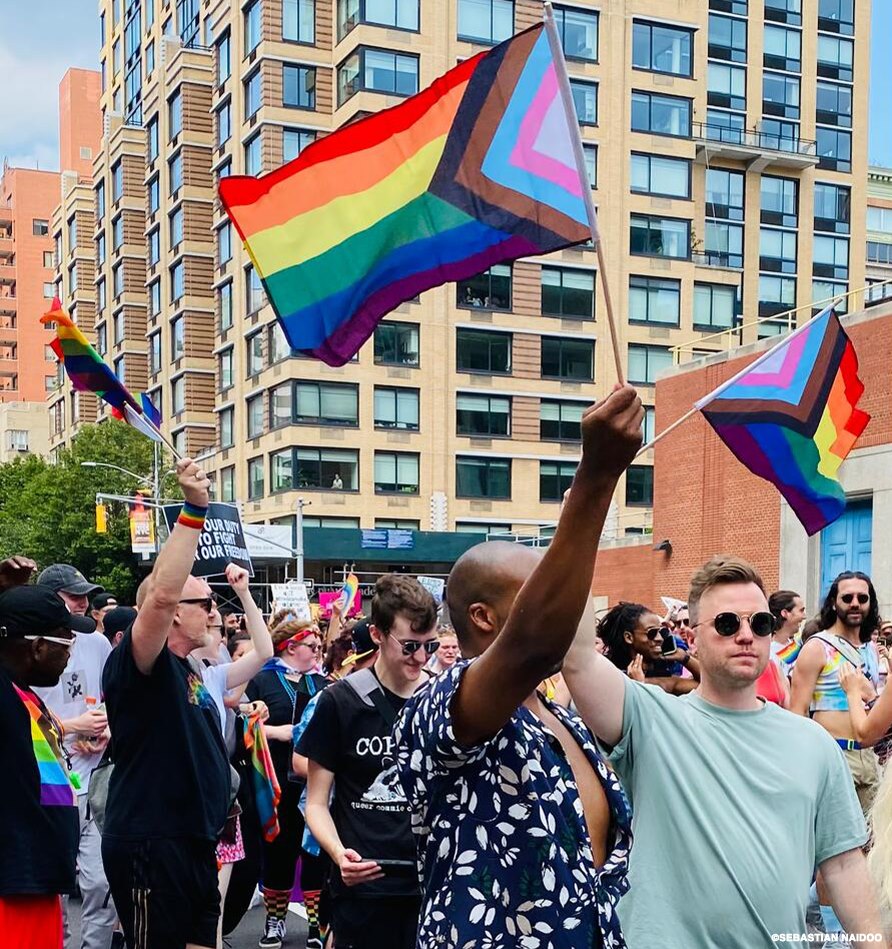
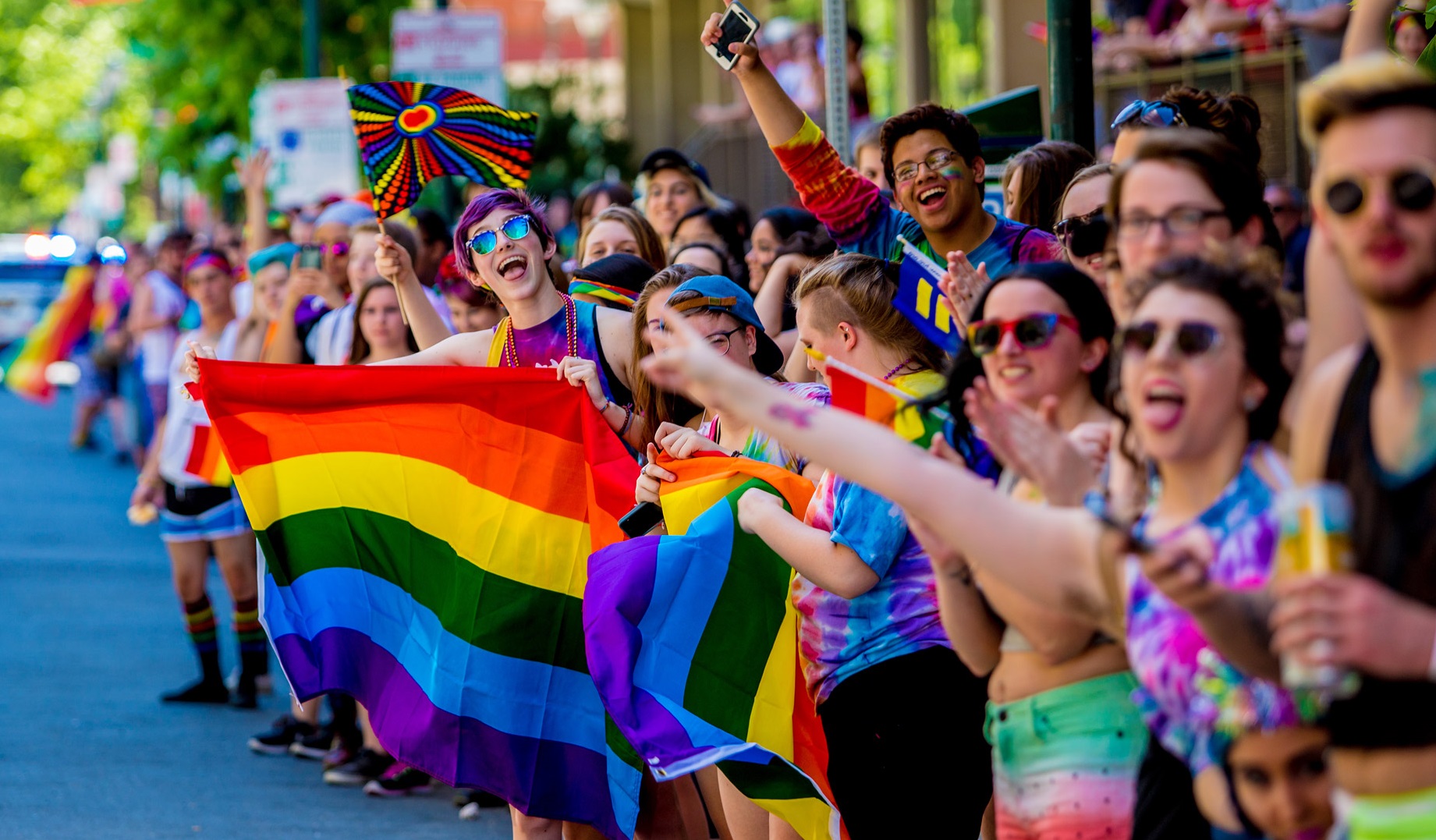
LGBTQ Voices: Learning
From Lived Experiences
National Alliance on Mental Illness: LGBTQ Issues
American
Psychological Association: Information on LGBTQ
Community
Foundation for Better Understanding: The
Health of LGBTQ People
Pew Research Center: Global Snapshot of Same-Sex
Marriage
Previous attempts to document the size of the LGBTQ
population in the US have proven difficult. There have
been issues in sampling as well as bias that affect
respondents’ answers. Prior to the HRC report, the
Public Religious Research Institute’s American Values
Atlas found 4.4 percent of Americans identified as
LGBTQ. The HRC findings double that number and still may
have undercounted the community, according to
researchers.
The Census Bureau’s largest surveys do not ask questions
about sexual orientation or gender identity. However,
data from these surveys help decide where billions of
dollars of federal money will go each year. Lacking
those questions means money is not going to programs and
initiatives supporting LGBTQ people.
[Source: Alex Cooper, Advocate Magazine, December 2021]
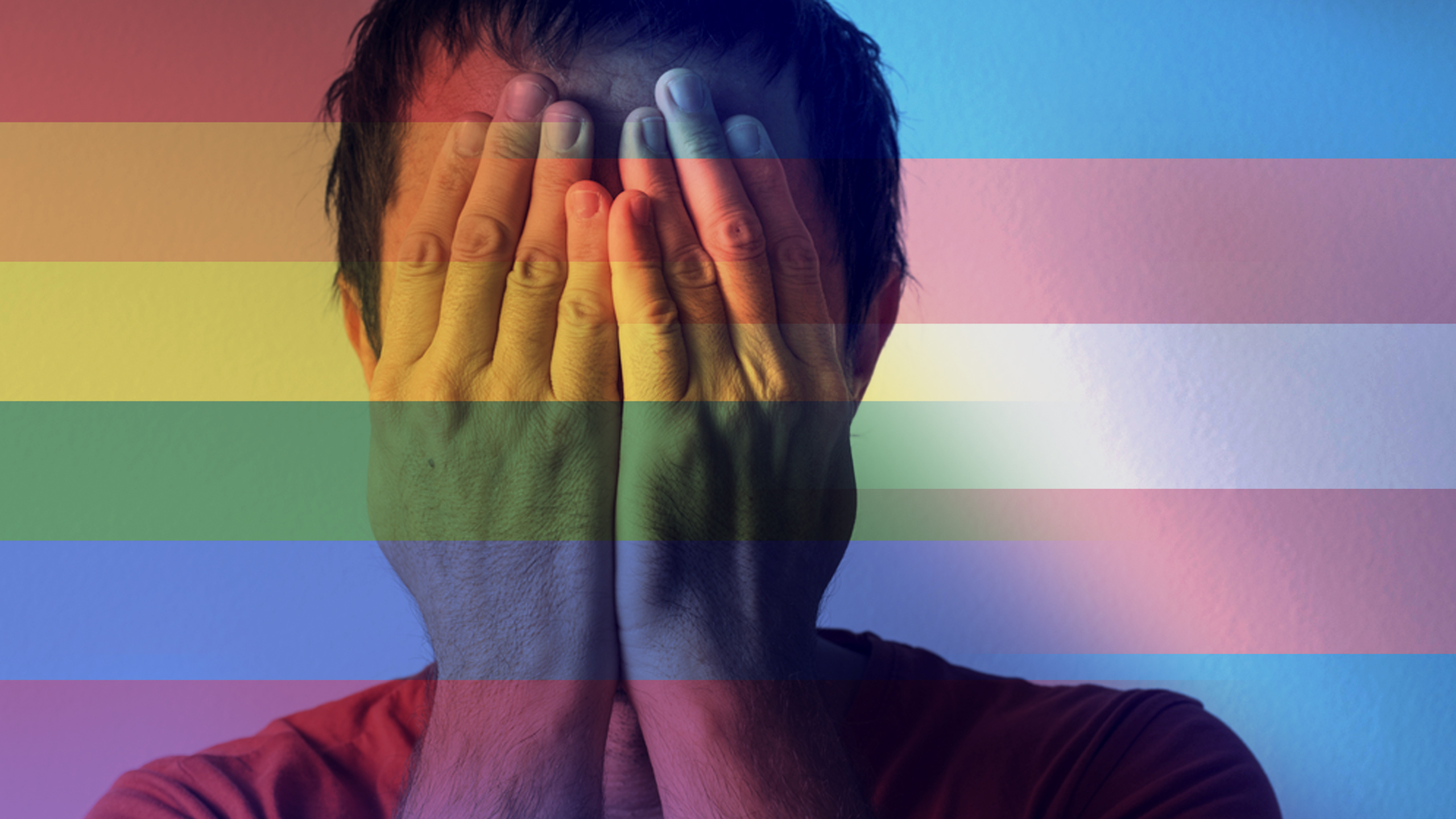
Less GOP and More LGBTQ: Gen Z is More
Likely to be Queer than Republican, Survey Reveals
Under Fire: War on LGBTQ People in
America
LGBTQ Adult Population in United States Reaches 20
Million
New Poll: Americans Identifying as LGBTQ More Than Ever
118th Congress Breaks Record for Lesbian,
Gay and Bisexual Representation
More Than 20 Million Americans Identify as LGBTQ,
According to Report
Gallup Poll: Percentage of LGBTQ Population Rises in US
NBC News: New Poll Says Americans Identifying as LGBTQ
More Than Ever
USA Today: Young People Driving Numbers as LGBTQ
Percentage Increases
ABC News: Increase in Percentage of Americans
Identifying as LGBTQ
CBS News: 1 in 6 Gen Z Adults Identify as Queer
Survey: Americans' Satisfaction
with LGBTQ Acceptance Hits New High
More Americans are "satisfied" with the country's level
of LGBTQ acceptance than ever, a new Gallup "Mood of the
Nation" poll shows.
USA Today reported on the results of the poll, an annual
survey that takes the country's pulse on numerous
"aspects of US life and policy areas, ranging from the
overall quality of life to the nation's military
strength and environmental issues," the article
explained.
"Americans' satisfaction with the acceptance of gay and
lesbian people stood out in the 2022 poll because it
reached the highest level the nation has seen since
Gallup started tracking the trend in 2001 (an all-time
high of 62%), though the peak is statistically similar
to 2016 levels," USA Today detailed.


Less GOP and More LGBTQ: Gen Z is More
Likely to be Queer than Republican, Survey Reveals
Worryingly High Number of Trans Adults
Have Considered Suicide
Under Fire: War on LGBTQ People in
America
Gallop Poll: US LGBTQ Identification Steady at 7.2%
The Number of LGBTQ Americans Has Doubled
Over the Past Decade
LGBTQ Adult Population in United States Reaches 20
Million
118th Congress Breaks Record for Lesbian,
Gay and Bisexual Representation
Same-Sex Households in the US Surpass 1
Million for the First Time
Survey: Americans' Satisfaction with
LGTBQ Acceptance Hits New High
The response to the question about LGBTQ people was more
positive than were the responses to any of the poll's
queries about 20 other topics, the article noted, and
reflected a substantial uptick. Last year's poll showed
only 55% of survey respondents reported being "very or
somewhat satisfied with the acceptance of gays and
lesbians in the nation."
In a perhaps surprising result, given the ongoing
legislative attacks on LGBTQ (and especially
transgender) Americans in recent years, "Fifty-nine
percent of Democratic survey respondents said they were
very or somewhat satisfied with the acceptance of gay
and lesbian people," while 64% of Republicans said the
same.
Gallup senior editor Jeff Jones told the newspaper that
the results are an indication of how mainstream LGBTQ
identity has become. "When we used to ask about same-sex
marriage, in the 1990s and even in early 2000s, we would
have majorities opposed," Jones noted. "And now we have
solid majorities that seem to grow at least a little bit
every year."

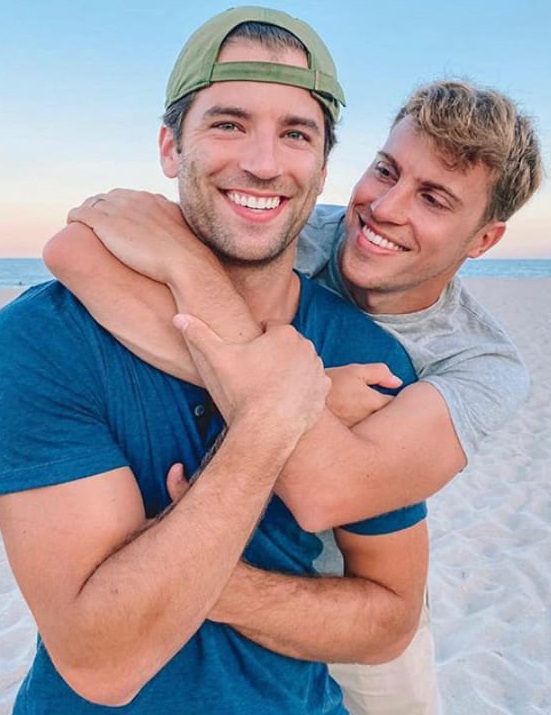
The results seemingly stand in contrast to a 2019 GLAAD
survey that indicated that younger Americans had become
more "uncomfortable" with their LGBTQ peers. As Time
Magazine reported at the time the GLAAD survey asked
"nearly 1,800 American adults... to rate their position,
on a scale of very uncomfortable to comfortable, to
prompted situations like 'having LGBTQ members at my
place of worship,' 'learning a family member is LGBTQ,'
and 'learning my child has a lesson on LGBTQ history in
school.' "
At the same time, however, approval of legal equality
for LGBTQ Americans remained high.
[Source: by Kilian
Melloy, Edge Media Network, Feb 2022]
Under Fire: War on LGBTQ People in
America
LGBTQ Adult Population in United States Reaches 20
Million
Survey: Americans' Satisfaction with
LGBTQ Acceptance Hits New High
LGBTQ People in the US: Select Findings from the
Generations and TransPop Studies
New Poll: Americans Identifying as LGBTQ More Than Ever
National Survey: State of
the LGBTQ Community in 2020
Pew Research Center: Global Divide on Homosexuality
LGBTQ Wellness: It's All About the Data
New Research: Lesbians More Accepted Than Gay Men
Human Rights Watch: Doctors Need Intersex
Care Standards
Negative and Positive
Factors: Wellbeing of LGBTQ Youth
HRW Report: Discrimination Against LGBTQ
Youth in US Schools
APA: Sexual Orientation, Homosexuality
Call to Action: Inclusive Sex Education Needed in Public
Schools
LGBTQ Topics for Discussion
State of the
LGBTQ Community in 2020
A National Public Opinion Survey: A Comprehensive New
Study from the Center for American Progress
Overall,
this study finds that many LGBTQ people continue to face
discrimination in their personal lives, in the workplace
and the public sphere, and in their access to critical
health care. This experience of discrimination leads to
many adverse consequences for their financial, mental,
and physical well-being. Many LGBTQ people report
altering their lives to avoid this discrimination and
the trauma associated with unequal treatment. Younger
generations generally report higher levels of
discrimination and attendant problems than do older
generations, and problems associated with discrimination
are most pronounced among transgender individuals,
individuals of color, and disabled individuals. Anxiety
about the coronavirus adds another layer of concern in
this community, particularly among those respondents who
are the most exposed in terms of their health or
front-line employment status.
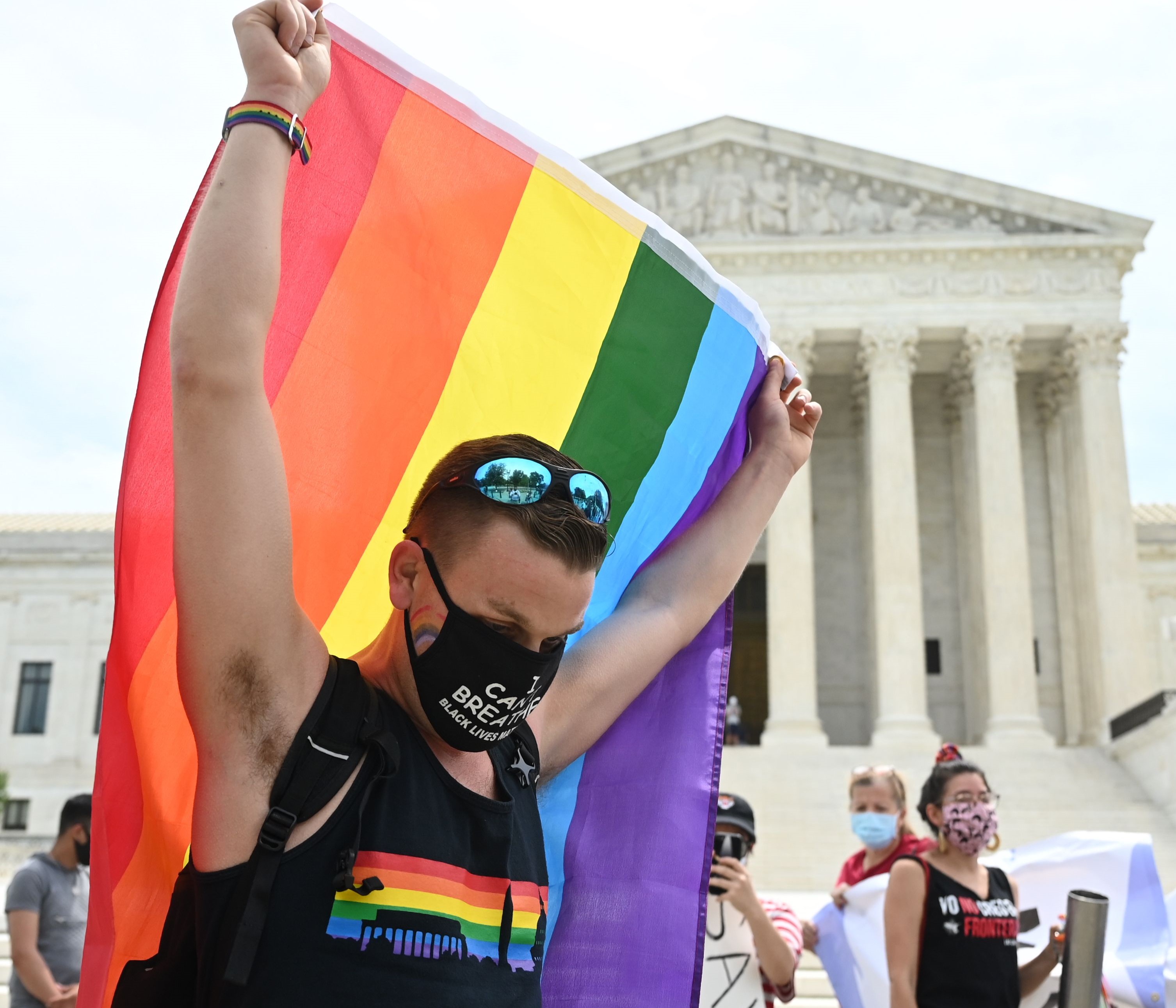
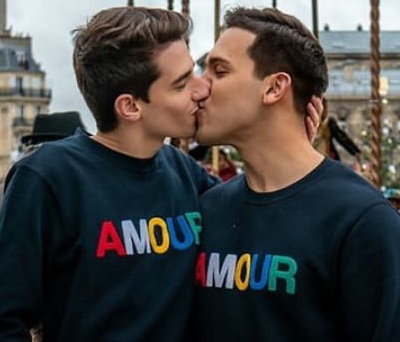
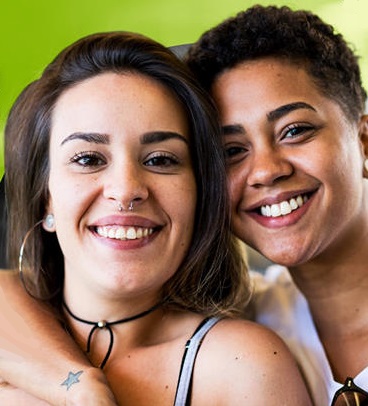
New Research: Gay Men and Stress
Kids of Queer Parents Are Alright,
Sometimes Even Better
GLAAD Annual Report: Accelerating Acceptance 2019
Research Report: LGBTQ
Leisure Activities
Queer Youth Negatively Affected by
Anti-LGBTQ Laws and Recent Debates
LGBTQ Youth are Less Likely to Feel Depressed with
Parental Support, Study Says
Report: Queer Youth Still
Attempting Suicide at High Rate
The remainder of this report will explore the results of
the study across major areas such as experiences of
overall discrimination, health care-specific
experiences, avoidance behaviors, and the effects of the
pandemic on LGBTQ Americans’ mental health. Major
findings from the survey include:
--More than 1 in 3 LGBTQ Americans faced discrimination
of some kind in the past year, including more than 3 in
5 transgender Americans.
--Discrimination adversely affects the mental and
economic well-being of many LGBTQ Americans, including 1
in 2 who report moderate or significant negative
psychological impacts.
--To avoid the experience of discrimination, more than
half of LGBTQ Americans report hiding a personal
relationship, and about one-fifth to one-third have
altered other aspects of their personal or work lives.
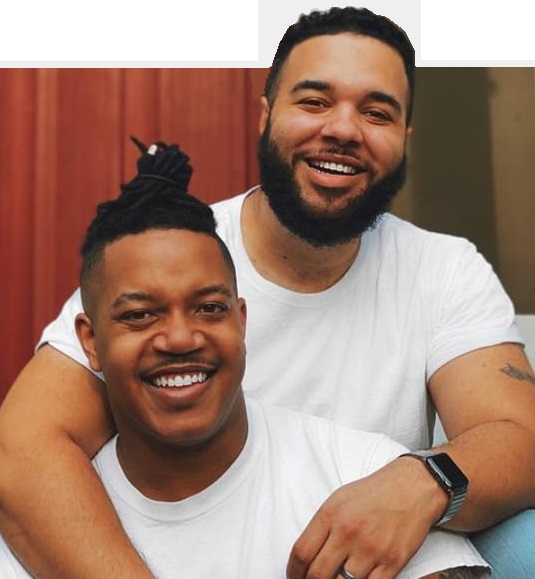

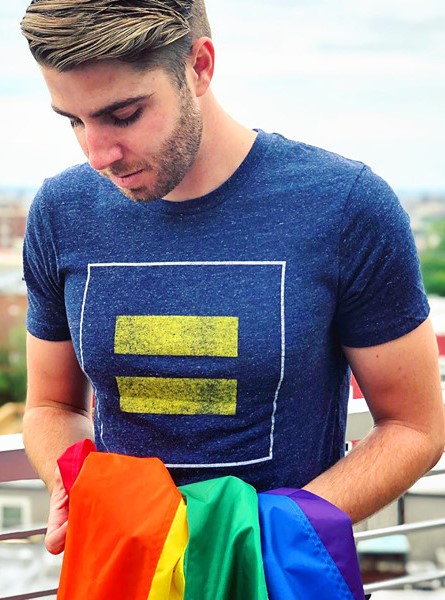
--Around 3 in 10 LGBTQ Americans faced difficulties last
year accessing necessary medical care due to cost
issues, including more than half of transgender
Americans.
--15 percent of LGBTQ Americans report postponing or
avoiding medical treatment due to discrimination,
including nearly 3 in 10 transgender individuals.
--Transgender individuals faced unique obstacles to
accessing health care, including 1 in 3 who had to teach
their doctor about transgender individuals in order to
receive appropriate care.
--LGBTQ Americans have experienced significant mental
health issues related to the COVID-19 pandemic.
This
report is an overview of survey responses, covering
several major demographic differences within the LGBTQ
community. These findings provide crucial insights into
the experiences of LGBTQ people to inform policy
responses to the disparities highlighted and avenues for
future research. The Center for American Progress plans
to track these attitudes and experiences over time to
assist policymakers and leaders in their efforts to
ensure full participation and equality for all LGBTQ
people, both legally and in their daily lives.
[Source:
Sharita Gruberg, Lindsay Mahowald, John Halpin, Center
for American Progress, October 2020]
Government Report: LGBTQ Youth Information
New Research: Gay Men and Stress
Less GOP and More LGBTQ: Gen Z is More
Likely to be Queer than Republican, Survey Reveals
GLAAD Annual Report: Accelerating Acceptance 2019
Research Report: LGBTQ
Leisure Activities
Report: Queer Youth Still
Attempting Suicide at High Rate
More Than 20 Million Americans Identify as LGBTQ,
According to Report
National Survey: State of
the LGBTQ Community in 2020
Pew Research Center: Global Divide on Homosexuality
Government Report: LGBTQ Youth Information
New Research: Gay Men and Stress
GLAAD Annual Report: Accelerating Acceptance 2019
LGBTQ Voices: Learning
From Lived Experiences
Pew Research Center: LGBTQ Social and Demographic Trends
National Survey: State of
the LGBTQ Community in 2020
LGBTQ Voices: Learning
From Lived Experiences
91% of LGBTQ Teens Are Bullied in
Trump's America
Nearly every LGBTQ
teenager in the United States has been bullied,
according to new research. A study published in June
2020 in the American Journal of Preventive Medicine
reports that 91 percent of adolescents in this
demographic was the target of at least one instance of
bias-based bullying. This whopping figure is more than
double previous estimates.
Additionally, 73 percent of LBGTQ youth have experienced
bullying for factors beyond their sexual orientation or
gender identity, such as body weight (57 percent),
race/ethnicity (30 percent), and religion (27 percent).

Bullying can lead to adverse impacts on health,
including heightened stress, depression, sleep
disorders, and unhealthy weight, the study warned. It is
also associated with an increased risk of suicide.
The study was authored by researchers from the
University of Connecticut's Rudd Center for Food Policy
and Obesity, using data from the LGBTQ National Teen
Survey, a nationwide evaluation conducted in partnership
with the Human Rights Campaign.
In the report, lead author Leah Lessard said the
findings call attention to "the wide range of bias-based
bullying experienced by SGM adolescents," meaning sexual
and gender minority young people. "Given that multiple
forms of bias-based bullying can worsen negative health
behaviors, it is critical to understand how school-based
interventions, such as Gay Straight Alliances (GSAs),
may be able to reduce targeted bullying," Lessard said.
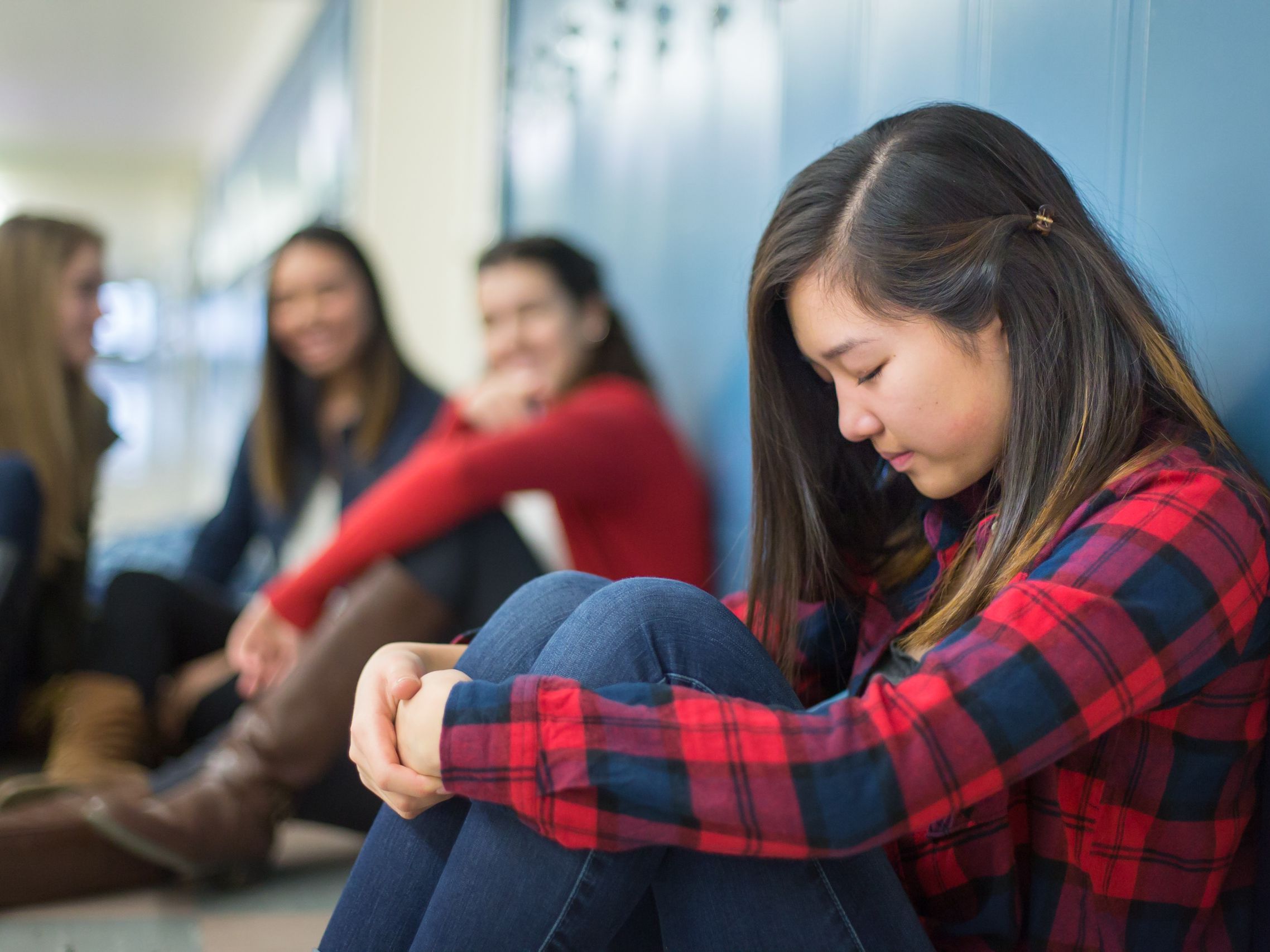
In addition to asking about bias-based bullying and
health risk indicators, the survey queried participants
(ages 13 to 17, from across the US), about gay-straight
alliances in schools. The study found that the presence
of a GSA correlated with less bullying.
"The harmful effects and wide range of bias-based
bullying experienced by SGM youth calls attention to the
importance of promoting broad-reaching inclusion and
acceptance within schools," Lessard said. "Due to the
breadth of stigma-reduction across multiple social
identities, our results underscore GSAs as a promising
avenue to support healthy outcomes for SGM youth."
These findings are "particularly important" in the
pandemic, the study noted, as cyberbullying rises and
many young people no longer have access to in-person
support groups. Researchers recommend that educators
"host virtual GSA meetings and utilize online learning
platforms to continue to foster social inclusion for
adolescents at risk for victimization."
[Source: Advocate Magazine, Daniel Reynolds, June 2020]
New Report: 91% of LGBTQ
Teens are Bullied in Trump's America
Pink News: Almost Every Queer Teen in Trump's America
Has Been Bullied
UCONN Report: 91% of LGBTQ Youth Are Bullied
Survey Finds Anti-LGBTQ Bias Affects Health and
Wellbeing of LGBTQ Teens
Negative and Positive
Factors: Wellbeing of LGBTQ Youth
It's Not Getting
Better for Queer Kids
"The culture may have
shifted on gay rights, but sky-high suicide rates
remain."
-Michael Hobbes,
Huff Post
"Any suicide is one too many. That so many teens find
life not worth living is a tragedy. However, there’s no
reason that we can’t change the reality of the
statistics that we see. There’s no reason why being a
sexual minority means a person must face a higher risk
for suicide or other mental-health problems. What does
put kids at risk of suicide is when they feel rejected
by families or friends or communities and when they feel
ashamed of themselves. Dealing with all of those
stresses can be really hard."
-Anna
Mueller, Sociologist, University of Chicago
"Teens who feel
uncomfortable with their sexuality often suffer from low
self-esteem, so it’s essential that we counter their
feelings of distress with a very positive message of
acceptance and love. Our teens need to understand that
while we sometimes disagree with them (or simply have
different feelings) we respect their beliefs and
differences. We love them no matter what."
-Dr. Harold
Koplewicz, Child Mind Institute
"Stigma is
about not valuing people who are different. It is about
viewing them as less worthy or less important.
When society treats people who are in a
minority group as if they have less value, those
individuals can feel serious stress."
-Ian
Rivers, Psychologist,
University of Strathclyde, Glasgow, Scotland
"We know that there are effective ways to prevent
suicide, but we need a much stronger national effort to
begin actually reducing LGBTQ youth suicide."
-Amy Green, Trevor
Project, Research Director
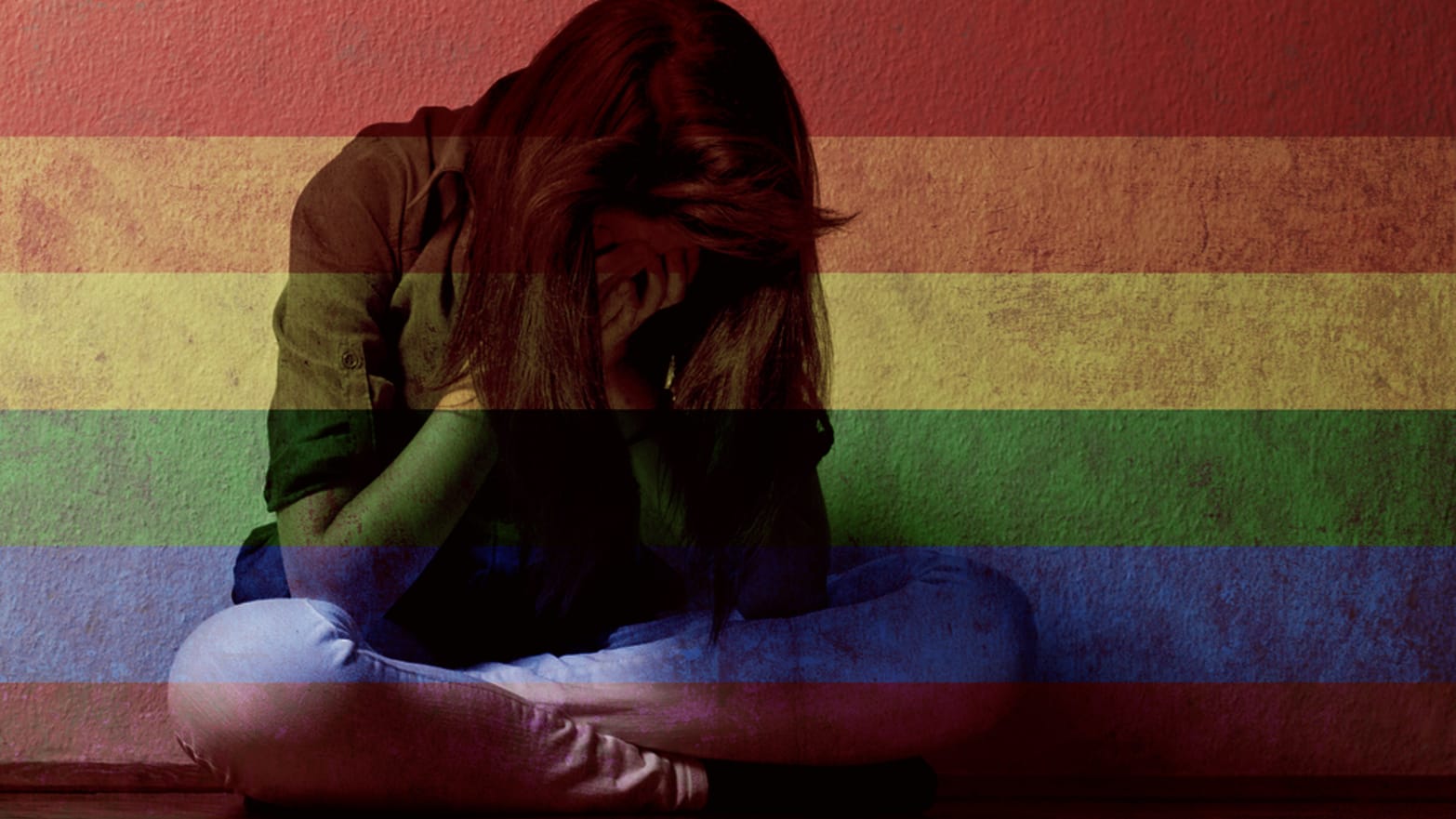
Despite decades of
progress on cultural visibility and political rights,
queer youth are still killing themselves at alarming
rates. According to a study by The Trevor Project, an
LGBTQ suicide prevention organization, lesbian, gay and
bisexual young adults are over four times more likely to
report planning or attempting suicide in the past year.
Nearly 50% of LGB high school students have considered
suicide, compared to just 13% of straight students. The
study also reveals that the suicide disparity between
straight and LGB high school students persists into
young adulthood.
“We’re not seeing LGB youth catching up once they move
out of the home and start independent lives,” said Amy
Green, the Trevor Project’s research director. This
indicates that the suicide disparity isn’t just the
result of overt abuse from fellow students or parents
during adolescence. Queer young adults may be
experiencing lingering trauma from the time they spent
in the closet or ongoing discrimination.
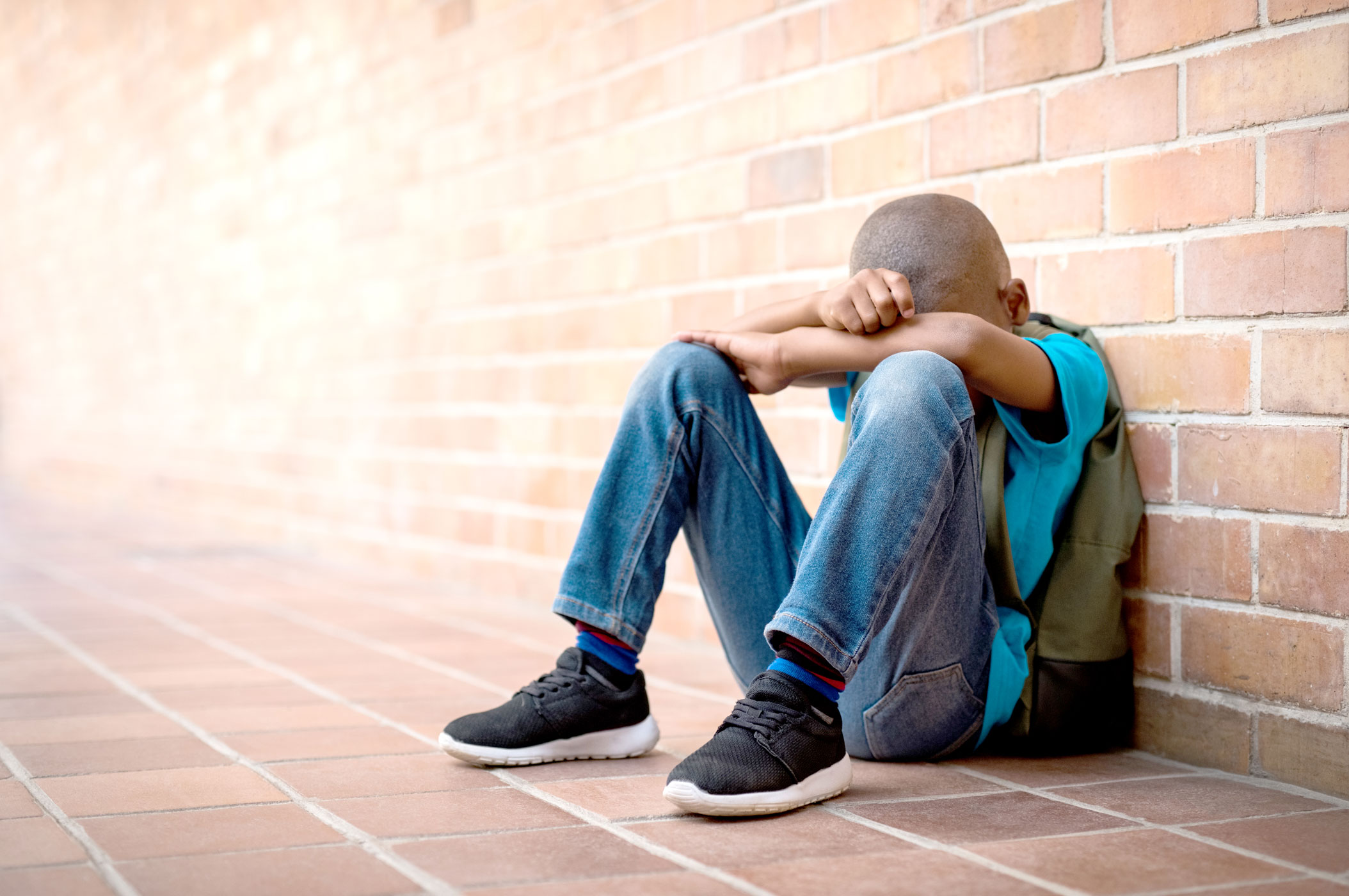
This theory, known as
“minority stress,” may also explain another surprising
finding from the study: For high school students,
bisexuals were more likely to have attempted suicide
than their straight or gay peers. Travis Salway, a
professor of epidemiology at Simon Fraser University who
researches LGBT mental health, said higher suicide risk
among bisexuals is a consistent research finding across
all age groups. The explanation, he said, is that
bisexual individuals often feel rejected from both
straight and queer cultures. “If you’re a bisexual
in a heterosexual relationship, other people will just
assume you’re straight, which makes you feel invisible,”
Salway said. “And then if you try to join the queer
community, you find that there’s very little recognition
or representation of your experiences. One of the
greatest risks for suicide is feeling like you don’t
matter or you don’t belong. That erasure is a huge
challenge for bisexual people.”
The suicide disparity between the queer and straight
communities (and between bisexuals and their gay and
lesbian peers) persists into adulthood. Salway said
rates of suicide attempts are highest among adolescents,
fall in young adulthood, then spike again as LGB people
reach their 30s and 40s. “A lot of people start to
consider suicide in high school, but as they age they
develop coping mechanisms through their job or their
social network and those suicidal thoughts go away,”
Salway said. But then, as they lose friends and family
members as part of aging, those feelings of loneliness
and depression return. “We’ve been attentive to the risk
of suicide among queer adolescents but we also need to
look at what’s happening in adulthood,” Salway said.
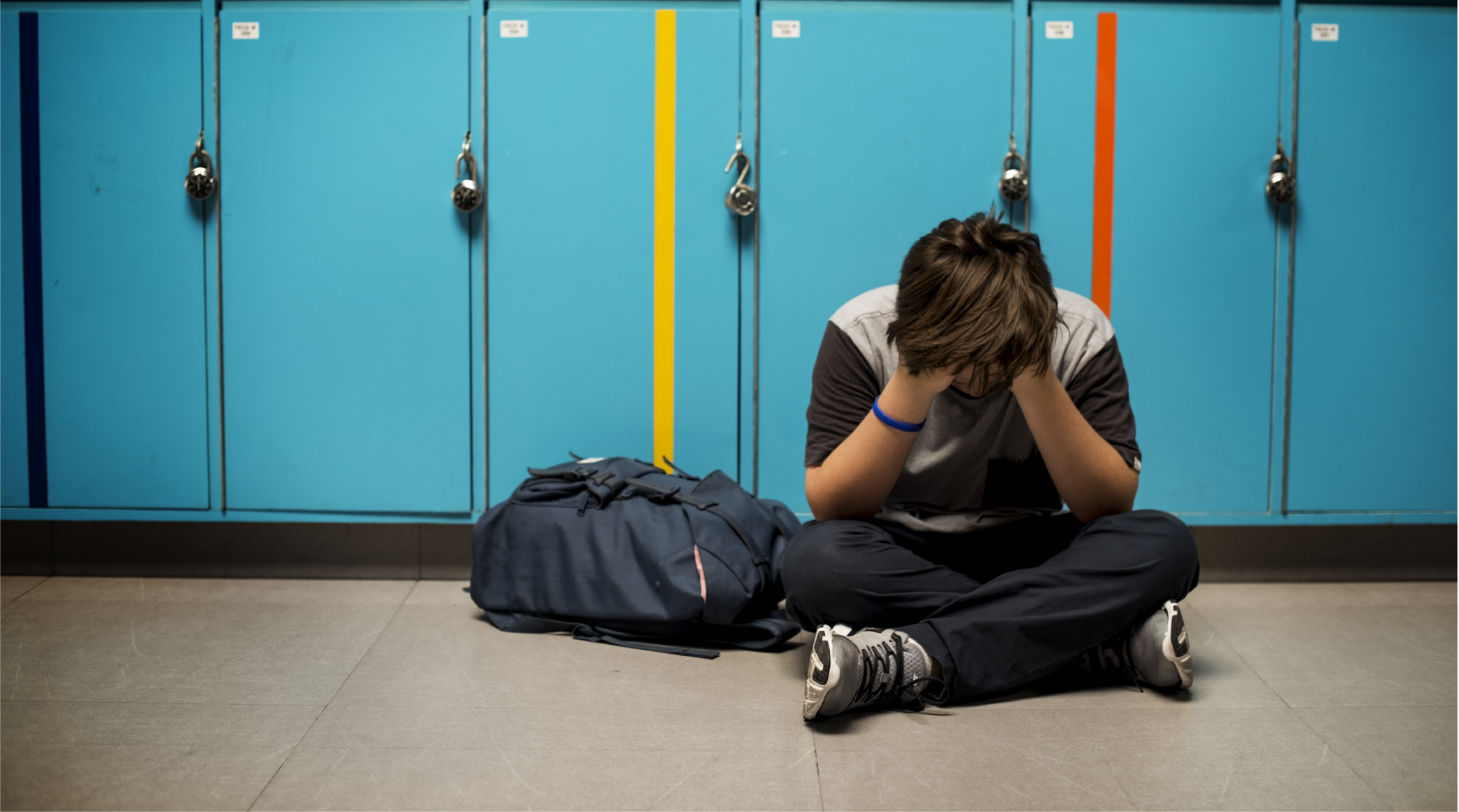
All of these findings challenge the presumption that
greater societal acceptance of queer people will
automatically result in better health outcomes. Despite
the massive gains in cultural awareness and advances in
political rights, there are still profound disparities
in openness to LGB students throughout the United
States. According to the LGBTQ anti-bullying
organization GLSEN, over 70% of LGBTQ students
experienced verbal harassment at school in 2017.
Broader societal factors could also play a role.
Suicides among American adolescents have been rising
steadily since 2007, a phenomenon researchers still
cannot fully explain. Plus, research has found that
depression and drug use spiked among the LGB community
during the nationwide debate over banning gay marriage
in 2004 and 2005. Recent political developments, such as
the highly publicized ban on trans soldiers in the
military, may be having a similar effect.
Regardless of the cause, though, Green said that the
United States needs to make deliberate investments in
suicide reduction among queer youth and young adults.
“This isn’t going to get better on its own,” Green said.
In recent years, the VA has significantly reduced
suicide among veterans by providing comprehensive
screening and follow-up services for patients receiving
services from a VA medical center. The US could make a
similar effort with the queer community.
[Source: Michael Hobbes, Huffington Post, Feb 2020]
Huff Post: It's Not Getting Better for Queer Kids
NBC News: Study Shows Differences Between Gay and
Straight Suicides
Science News: Scientists Investigate Suicide Risk Among
LGBTQ Teens
Info: LGBTQ Bullying and Suicide
Negative and Positive
Factors: Wellbeing of LGBTQ Youth
Child Mind Institute: LGBTQ Teens, Bullying, and Suicide
Government Report: LGBTQ Youth Information
Report: Queer Youth Still
Attempting Suicide at High Rate
Millennials'
View of LGBTQ Issues
Millennials are now the largest and most racially and
ethnically diverse generation ever, making up the
largest share of eligible voters. And while many of the
most important issues facing our country revolve around
millennials, rarely are the positions of millennials,
especially those of color or queer, front and center in
public discourse.
To address this void, I built the GenForward Survey, a
nationally representative survey of over 1,750 young
adults ages 18-34. The survey is conducted bimonthly and
includes oversamples of African-American, Latinx, and
Asian-American young adults, ensuring we can accurately
represent their positions and the positions of all
millennials on important issues facing the country.
We focused our GenForward survey on LGBTQ issues and
discovered some important insights. For example, 14
percent of millennials identify as something other than
heterosexual, ranging from queer to LGBTQ to
same-gender-loving. However, irrespective of their
sexual identity, majorities of millennials across race
and ethnicity say they know someone who is LGB. In
contrast, only about a quarter of millennials of color
(22 percent) and 37 percent of white millennials report
knowing someone who is transgender. Research tells us
that knowing someone who is LGBTQ is important in making
the attitudes of individuals more tolerant and
respectful when it comes to the rights and equality of
the LGBTQ communities.

The impact of knowing someone LGBTQ seems evident in
millennials' positions on the equality of LGBTQ
citizens. For example, majorities of millennials across
race and ethnicity “somewhat” or “strongly” favor
allowing LGBTQ people to adopt children, establishing
laws to protect LGBTQ people from job discrimination,
allowing transgender people to serve in the military,
increasing government funding for the prevention and
treatment of HIV and AIDS, and accepting more LGBTQ
immigrants from countries that criminalize sexuality.
Millennials are also cognizant of the discrimination
many members of LGBTQ communities face. Majorities of
millennials across race and ethnicity say that there is
“some” or “a lot” of discrimination against LGB
individuals and a majority of African-Americans (51
percent) and pluralities of Latinx people (48 percent),
and whites (45 percent) believe that there is a lot of
discrimination against transgender people.
Asian-American millennials (30 percent) are the least
likely to say there is a lot of discrimination against
transgender individuals in the country.
The concern with the discrimination that LGBTQ
communities face is also evident in millennials'
responses to our question about the biggest problems
facing LGBTQ people. Again, across race and ethnicity
and sexual orientation there is shared priority for
reducing violent hate crime and ending bullying against
young LGBTQ people. However, despite some agreement
about the most pressing issues faced by LGBTQ
communities, majorities of African-American (53 percent)
and Latinx (50 percent) millennials believe issues
confronting LGBTQ individuals in communities of color
are very different than the issues promoted by
mainstream organizations — and 52 percent of LGBTQ
Millennials agree with that position. In contrast, white
(58 percent) and Asian-American (54 percent) millennials
believe that all LGBTQ individuals benefit when
mainstream LGBTQ organizations fight for basic rights.
This discrepancy deserves attention as LGBTQ
organizations develop programs for delivering services
and strategies for advocacy.
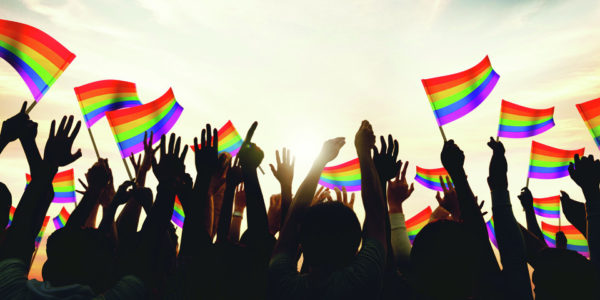
While nearly every question on our survey indicated
overwhelming support for the rights and equality of
LGBTQ individuals and communities, there was one
puzzling finding. At the end of our survey, we used an
often-asked question, “Has homosexuality led to a
deterioration of morality in this country?” Even though
a majority of millennials disagreed with this statement,
a significant number (41 agreed) agreed. Even more
surprisingly, 21 percent of LGBTQ millennials agreed.
What are we to make of this contradiction in beliefs?
First, this is the only place in the survey where we
used the word “homosexuality.” That word may be a
trigger inscribed in our culture as something bad and
deviant. It is also possible that for millennials
“homosexuality” may mean something quite different than
the more familiar “LGBTQ.” This is a contradiction
Millennials (and we) will have to work out over time. It
should remind us of all the work that remains to be done
and how little we should take for granted when it comes
to educating young people about the reality of LGBTQ
lives, especially the lives of young queers of color.
[Source: Cathy Cohen, University of Chicago, Advocate, July 2018]
Vanity Fair: How Much Do Millennials Care About LGBTQ
Rights?
Advocate: Millennials' View of LGBTQ Issues
NCRM: New GenForward Survey Seeks Stats on Millennials'
LGBTQ Views
BLT: Study Documents Millennials' Views on LGBTQ Issues
Lesbian Moms
Raise Healthy Children
In the
longest-running study on the issue to date, researchers
have shown that kids raised by lesbian moms show no
significant mental health issues.
“In a
large, prospective study involving 25-year-olds with
sexual-minority parents, there were no significant
differences in measures of mental health between those
who were conceived through donor insemination and
enrolled before they were born and those in a US
population-based normative sample,” said the study’s
authors, Nanette Gartrell, MD, Henny Bos, PhD, and
Audrey Koh, MD.
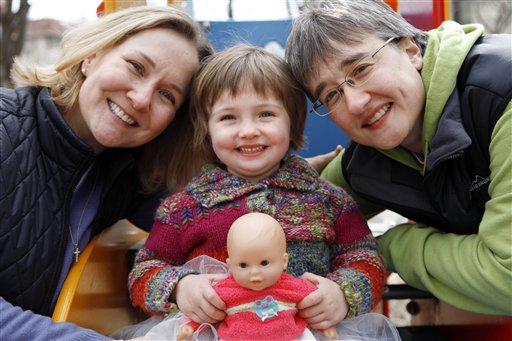

The study
has followed the same mothers and their children since
the 1986. In the findings, published in the New England
Journal of Medicine, researchers discovered that the
children of these mothers were faring as well or better
than others of their age.
While the
oldest of these children are well into adulthood, the
study’s findings show that even young adults are faring
well in lesbian households.
The study, in conjunction
with another recent study covering gay and lesbian
parents, flies in the face of erroneous notions that
children need mixed-gender parents for better mental
well-being.
“These
findings demonstrate that claims that it is harmful for
children to be raised by same-sex couples are completely
unfounded,” Bos stated. “There is no justification to
restrict child custody or placement, or access to
reproductive technologies, based on the parents’ sexual
orientation.”

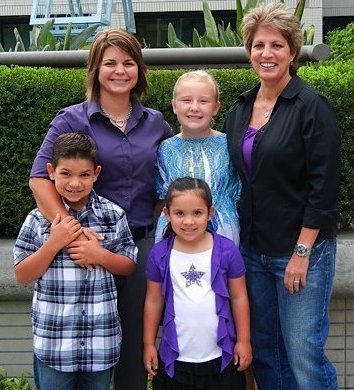
The study
started with 154 prospective mothers within 84 lesbian
families who were in the midst of conceiving children
via donor insemination in three US cities. The study
also included 77 offspring from these mothers.
“When I
began this study in 1986, there was considerable
speculation about the future mental health of children
conceived through donor insemination and raised by
sexual minority parents,” said Gartrell. “We have
followed these families since the mothers were
inseminating or pregnant and now find that their
25-year-old daughters and sons score as well on mental
health as other adults of the same age.”
While the
overall sample size is small, urging caution from the
study’s authors, the length of time the study has been
running provides additional faith in the results.
[Source: Gwendolyn Smith, LGBTQ Nation, August 2018]
Lesbian Moms Raise Healthy Children
Kids with Lesbian Parents Are Just as
Healthy As Other Kids, Study Finds
Kids Can Thrive with Gay Parents
Info: LGBTQ Parents
Children Raised by Same Sex Parents at No Disadvantage
Advocate: Study on Lesbian Moms Shows Kids Are Alright
No Differences Between Children of Same-Sex and
Opposite-Sex Parents
Info:
LGBTQ Families
LGBTQ Youth
Sexual
orientation and gender are important aspects of a young
person’s identity. Understanding and expressing sexual
orientation and gender and developing related identities
are typical development tasks that vary across children
and youth. For example, some youth may be unsure of
their sexual orientation, whereas others have been clear
about it since childhood and have expressed it since a
young age. Expressing and exploring gender identity and
roles is also a part of normal development. The process
of understanding and expressing one’s sexual orientation
and gender identity is unique to each individual. It is
not a one-time event and personal, cultural, and social
factors may influence how one expresses their sexual
orientation and gender identity.

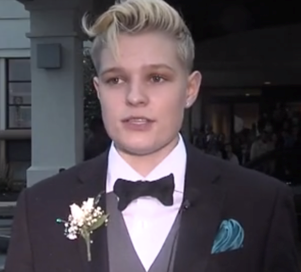
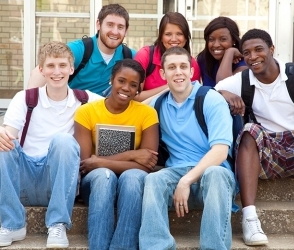
Unfortunately, lesbian, gay, bisexual, transgender, and
queer (LGBTQ) youth experience various challenges
because of how others respond to their sexual
orientation or gender identity/expression. This is also
true for youth who are questioning their sexual
orientation or gender identity, or may be perceived as
LGBTQ or gender variant by others.
Gender
variant youth are not necessarily LGBTQ. In fact, any
youth who does not fit typical social expectations for
his or her mannerisms, behavior, or choice of clothing
based on birth-assigned gender, for example, can be
considered “gender variant.” This does not mean the
youth is lesbian, gay, or bisexual, or identifies as
transgender or a gender different from what he or she
was assigned at birth.
A landmark
2011 Institute of Medicine (IOM) report reviewed
research on the health of LGBTQ individuals, including
youth. Although this research is limited, the IOM report
found that “the disparities in both mental and physical
health that are seen between LGBTQ and heterosexual and
non-gender-variant youth are influenced largely by their
experiences of stigma and discrimination during the
development of their sexual orientation and gender
identity.” These negative experiences include high rates
of physical and emotional bias and violence; rejection
by families and peers; and inadequate supports in
schools, employment, and communities because of their
sexual orientation and gender identity/expression.
Stress associated with these experiences can put LGBTQ
young people at risk for negative health outcomes.
Research shows that due to these environmental
challenges, LGBTQ youth are at risk for negative health
outcomes and are more likely to attempt suicide,
experience homelessness, and use illegal drugs. These
issues may also contribute to anxiety, depressive
symptoms, and feelings of isolation. Youth who express
their gender in ways that vary from societal
expectations for their perceived sex or gender are at
risk for high levels of childhood physical,
psychological, and sexual abuse. They are also at risk
for school victimization. As a result, they may have
poorer well-being than lesbian, gay, and bisexual peers
whose gender expression is more closely aligned with
societal expectations.
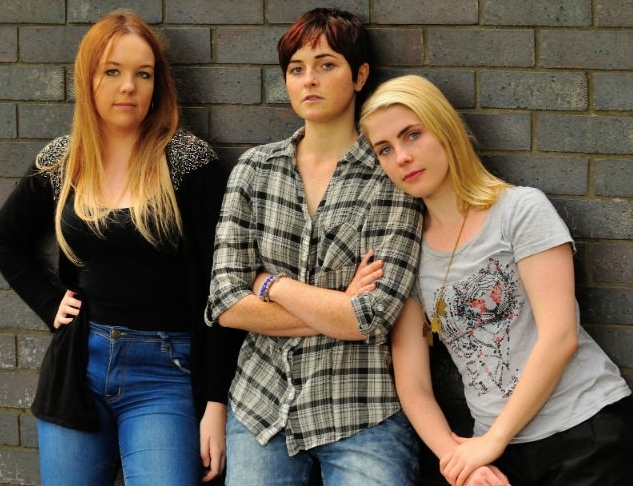
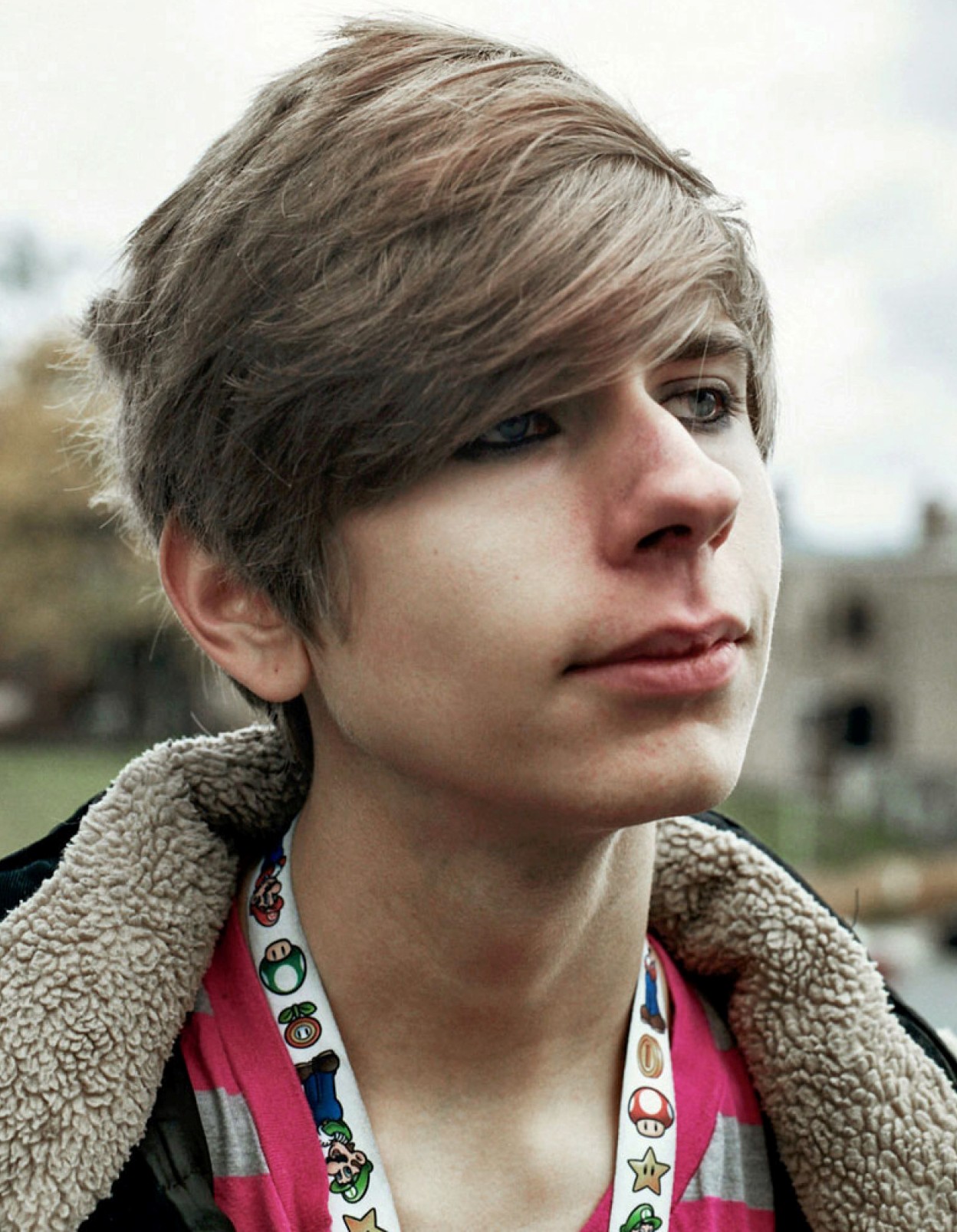
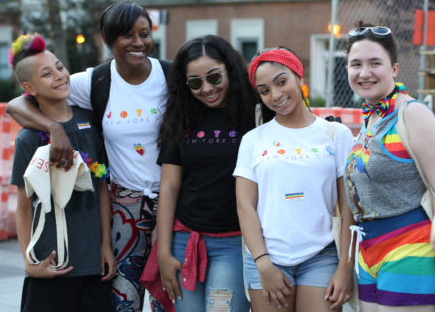
To date, most research on LGBTQ youth has focused on the
risk factors and disparities they experience compared
with youth who are not LGBTQ. However, emerging research
on resiliency and protective factors offers a
strength-based focus on LGBTQ youth well-being.
Addressing LGBTQ-related stigma, discrimination, and
violence; building on the strengths of LGBTQ youth; and
fostering supports such as family acceptance and safe,
affirming environments in schools and other settings
will help improve outcomes for LGBTQ young people.
Federal and local policies and practices increasingly
acknowledge and focus on the experiences and needs of
LGBTQ youth. Numerous national advocacy and other
organizations are also giving greater attention to LGBTQ
youth in their work. Fostering safe, affirming
communities and youth-serving settings such as schools
for all youth requires efforts to address the challenges
described here. At the same time, it is also important
to acknowledge and build on the strengths, resilience,
and factors that protect LGBTQ youth from risk, such as
connection to caring adults and peers and family
acceptance.
[Source:
Youth.Gov website / Institute of Medicine, 2011 /
Poirier, Fisher, Hunt, & Bearse, 2014 / Hunter &
Schaecher, 1987 / Reis, 1999 / Reis & Saewyc, 1999 /
Ray, 2006 / Ryan, Huebner, Diaz, & Sanchez, 2009 /
SAMHSA, 2014 / Roberts, Rosario, Corliss, Koenen, &
Austin, 2012 / Toomey, Ryan, Diaz, & Russell, 2010 /
Rieger & Savin-Williams, 2012 / American Association of
School Administrators / National Association of School
Nurses, 2003 / National Association of School
Psychologists, 2006]
LGBTQ Funders: Research on LGBTQ Issues
National LGBTQ Task Force: Reports and
Studies
Negative and Positive
Factors: Wellbeing of LGBTQ Youth
Info:
LGBTQ Youth
LGBTQ Wellness: It's All About the Data
UALR Archives: Basic Guide to LGBTQ
Issues
Info: LGBTQ Data and Statistics
Why “Homosexual” is an Offensive Term
APA: Transgender, Gender Identity, Gender
Expression
HRC: State Equality Index
Encyclopedia of Homosexuality
Family
Acceptance and Support
Family
acceptance and support are significant factors that
promote well-being and protection from risks for all
youth, including LGBTQ youth. The meaning of family
varies by personal, cultural, and other factors and can
include individuals who are not biologically or legally
related to a youth (families of choice). Family
responses to expressions of gender and sexual identity
by youth may vary. Although some families are
supportive, accepting, and even celebratory, others may
respond and behave in ways that have negative
consequences and result in trauma to the youth. Research
demonstrates a strong link between family rejection of
LGBTQ youth and negative physical and mental health
outcomes for them. In contrast, family acceptance can
serve as a protective factor against depression,
substance use, and suicidal ideation and attempts.
Research has found that compared with LGBTQ youth who
experienced little or no parental/caregiver rejection,
those LGBTQ youth who were highly rejected were:
--more than eight times as likely to attempt suicide
--almost six times as likely to report high levels of
depression
--more than three times as likely to use illegal drugs
--more than three times as likely to be at high risk for
HIV and sexually transmitted diseases
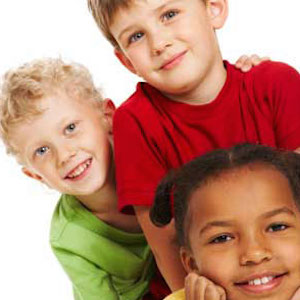
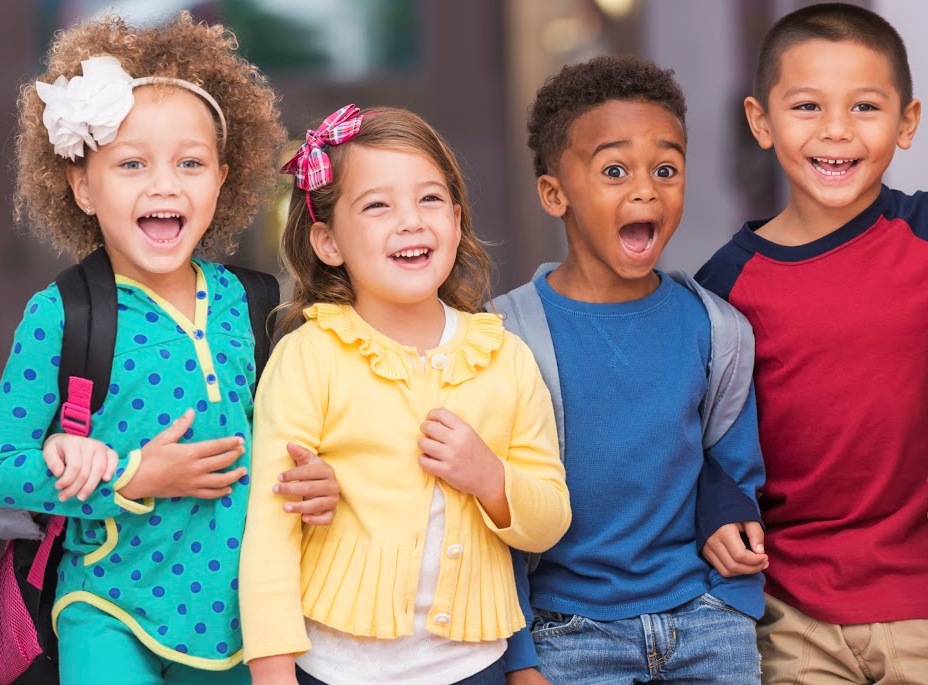
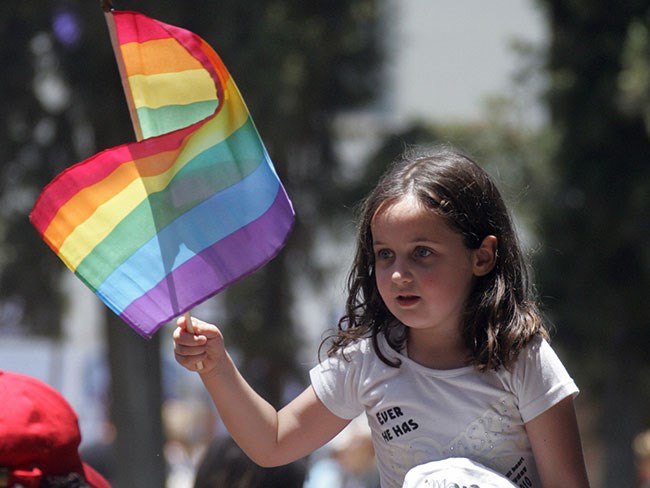
A recent report of findings from a survey of more than
10,000 LGBTQ youth ages 13 to 17 (using a convenience
sample, which may not be representative of all LGBTQ
youth) also found that approximately one in four
identified non-accepting families as the most important
challenge in their lives. These findings illustrate the
importance of family acceptance and support in the lives
of LGBTQ youth.
Youth-serving organizations and systems can build
awareness about and encourage family behaviors that
research has shown can affect outcomes for LGBTQ youth.
Examples of behaviors that should be avoided and
discouraged include:
--blocking access to LGBTQ friends, events, and
resources
--blaming youth when they are discriminated against
because of their LGBTQ identity
--pressuring youth to be more (or less) “masculine” or
“feminine”
--pressuring youth to keep their LGBTQ identity a
“secret”

Rather, it is important for families to express support
through such behaviors as:
--talking with youth about their LGBTQ identity in an
affirming manner
--communicating that their young person can have a happy
future as an LGBTQ adult
--working to ensure that other family members respect
the young person
--talking with clergy and help their faith community
support LGBTQ individuals
--advocating for youth if they are mistreated because of
their identity
It is also important for youth-serving agencies and
communities to enhance their cultural competence in
working with LGBTQ-headed families, which are increasing
in number. Youth who are not LGBTQ but have an LGBTQ
caregiver may also experience bias and other negative
outcomes because of reactions to their caregiver’s LGBTQ
identity.
[Source:
Youth.Gov website / Poirier, Fisher, Hunt, & Bearse,
2014 / Poirier, Fisher, Hunt, & Bearse, 2014 / Ryan,
2009, 2010 / SAMHSA, 2014 / Institute of Medicine, 2011
/ Ryan, Huebner, Diaz, & Sanchez, 2009 / SAMHSA, 2014 /
Human Rights Campaign, 2012 / Krivickas & Lofquist,
2011]
Government Report: LGBTQ Youth Information
National Alliance on Mental Illness: LGBTQ Issues
Info:
LGBTQ Kids
American
Psychological Association: Information on LGBTQ
Community
Foundation for Better Understanding: The
Health of LGBTQ People
Human Rights Watch: Doctors Need Intersex
Care Standards
Info: LGBTQ Data and Statistics
HRW Report: Discrimination Against LGBTQ
Youth in US Schools
APA: Sexual Orientation, Homosexuality
Health of LGBTQ People
Lesbians, gay men, and
bisexual men and women are defined according to their
sexual orientation, which is typically conceptualized in
terms of sexual attraction, behavior, identity, or some
combination of these dimensions. They share the fact
that their sexual orientation is not exclusively
heterosexual. Yet this grouping of “non-heterosexuals”
includes men and women; homosexual and bisexual
individuals; people who label themselves as gay,
lesbian, or bisexual, among other terms; and people who
do not adopt such labels but nevertheless experience
same-sex attraction or engage in same-sex sexual
behavior. These differences have important health
implications for each group.


In contrast to lesbians,
gay men, and bisexual men and women, transgender people
are defined according to their gender identity and
presentation. This group encompasses individuals whose
gender identity differs from the sex originally assigned
to them at birth or whose gender expression varies
significantly from what is traditionally associated with
or typical for that sex (people identified as male at
birth who subsequently identify as female, and people
identified as female at birth who later identify as
male), as well as other individuals who vary from or
reject traditional cultural conceptualizations of gender
in terms of the male–female dichotomy. The transgender
population is diverse in gender identity, expression,
and sexual orientation. Some transgender individuals
have undergone medical interventions to alter their
sexual anatomy and physiology, others wish to have such
procedures in the future, and still others do not.
Transgender people can be heterosexual, homosexual, or
bisexual in their sexual orientation. Some lesbians, gay
men, and bisexuals are transgender. Most are not.
Male-to-female transgender people are known as MtF,
transgender females, or transwomen, while female-to-male
transgender people are known as FtM, transgender males,
or transmen. Some transgender people do not fit into
either of these binary categories. As one might expect,
there are health differences between transgender and
non-transgender people, as well as between transgender
females and transgender males.
What do lesbians, gay
men, bisexual women and men, and transgender people have
in common that makes them, as a combined population, an
appropriate focus of health research? The main
commonality across these diverse groups is their
members' historically marginalized social status
relative to society's cultural norm of the exclusively
heterosexual individual who conforms to traditional
gender roles and expectations. Put another way, these
groups share the common status of “other” because of
their members' departures from heterosexuality and
gender norms. Their “otherness” is the basis for stigma
and its attendant prejudice, discrimination, and
violence, which underlie society's general lack of
attention to their health needs and many of the health
disparities discussed in this report. For some, this
“otherness” may be complicated by additional dimensions
of inequality such as race, ethnicity, and socioeconomic
status, resulting in stigma at multiple levels.

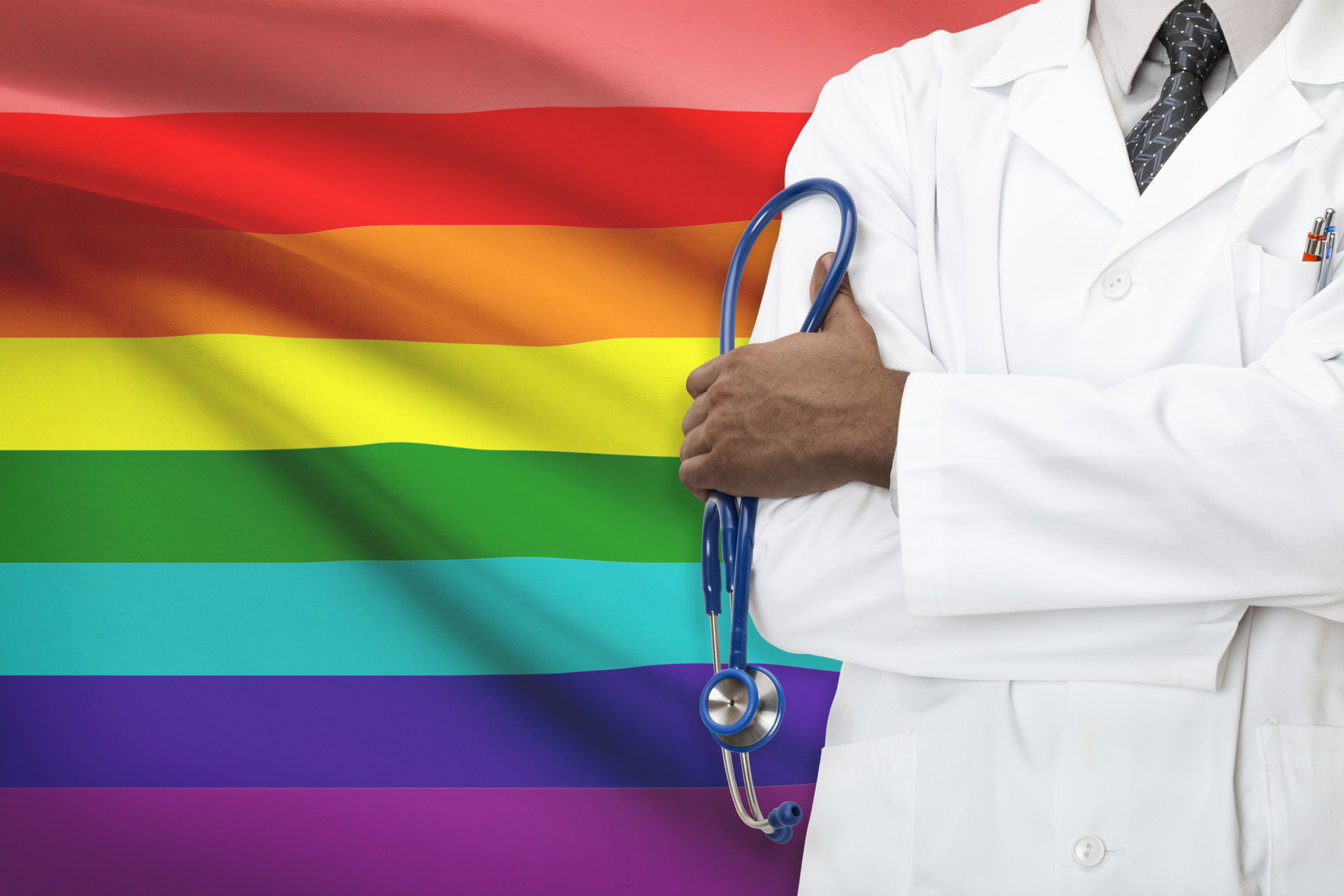
To better understand how
sexuality- and gender-linked stigma are related to
health, imagine a world in which gender nonconformity,
same-sex attraction, and same-sex sexual behavior are
universally understood and accepted as part of the
normal spectrum of the human condition. In this world,
membership in any of the groups encompassed by LGBTQ
would carry no social stigma, engender no disgrace or
personal shame, and result in no discrimination. In this
world, a host of issues would threaten the health of
LGBTQ individuals: major chronic diseases such as cancer
and heart disease; communicable diseases; mental
disorders; environmental hazards; the threat of violence
and terrorism; and the many other factors that
jeopardize human “physical, mental and social
well-being.” By and large, however, these issues would
be the same as those confronting the rest of humanity.
Only a few factors would
stand out for LGBTQ individuals specifically. There
would be little reason for any major medical research
organization to issue a report on LGBTQ health issues.
While the experience of
stigma can differ across sexual and gender minorities,
stigmatization touches the lives of all these groups in
important ways and thereby affects their health. In
contrast to members of many other marginalized groups,
LGBTQ individuals frequently are invisible to health
care researchers and providers.
It is important to note
that, despite the common experience of stigma among
members of sexual- and gender-minority groups, LGBTQ
people have not been passive victims of discrimination
and prejudice. The achievements of LGBTQ people over the
past few decades in building a community infrastructure
that addresses their health needs, as well as obtaining
acknowledgment of their health concerns from scientific
bodies and government entities, attest to their
commitment to resisting stigma and working actively for
equal treatment in all aspects of their lives, including
having access to appropriate health care services and
reducing health care disparities. Indeed, research
demonstrates the impressive psychological resiliency
displayed by members of these populations, often in the
face of considerable stress.
[Source: National Center
for Biotechnology Information, US National Library of
Medicine]
LGBTQ Funders: Research on LGBTQ Issues
National LGBTQ Task Force: Reports and
Studies
Negative and Positive
Factors: Wellbeing of LGBTQ Youth
Info:
LGBTQ Health and Medical Issues
UALR Archives: Basic Guide to LGBTQ
Issues
LGBTQ Wellness: It's All About the Data
Why “Homosexual” is an Offensive Term
APA: Transgender, Gender Identity, Gender
Expression
Info: LGBTQ Data and Statistics
HRC: State Equality Index
Encyclopedia of Homosexuality
Future Not In Front of Us, It is Inside of Us
“Here we don’t talk about sex” was how a diplomat in
2007 responded when I tried to talk about LGBTQ rights
at the United Nations, shortly after I joined Human
Rights Watch as advocacy director for the lesbian, gay,
bisexual, transgender, and queer rights program. As I
prepare to leave the organization, it’s clear there have
been remarkable changes during my tenure here. Back
then, I had to explain to the diplomat that discussing
LGBTQ rights means talking about equality and
nondiscrimination, privacy, freedom to think and to
speak out, to gather peacefully with other people, to
form a family, to name just a few. No special treatment,
just the same fundamental rights to which all human
beings are entitled.
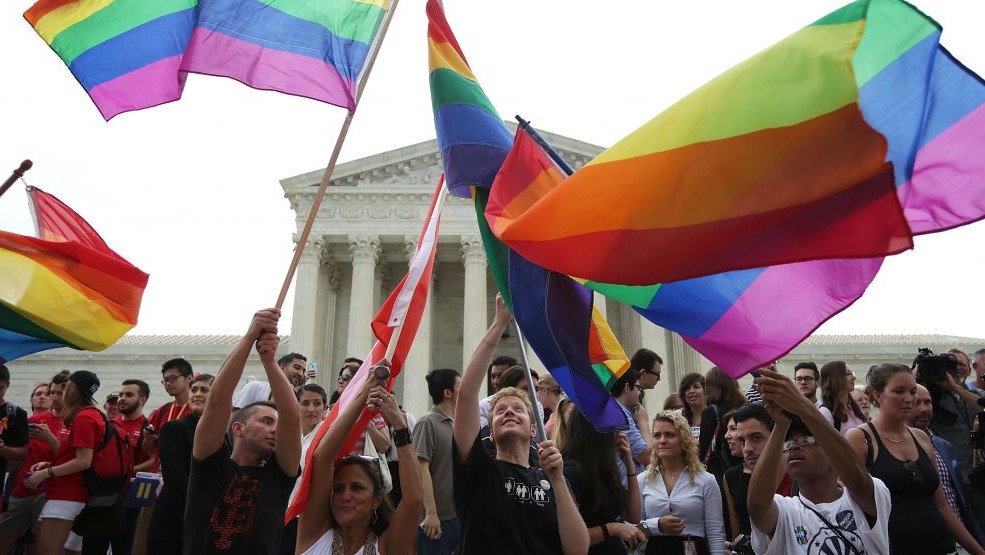
The Yogyakarta Principles, developed in 2006, proved to
be an excellent tool to demonstrate the enormous gap
between universally recognized human rights and the
everyday realities experienced by LGBTQ people. Brazil,
Argentina, and Uruguay took the lead in launching the
Yogyakarta Principles at the UN headquarters in New York
in November 2007 — three Latin American countries with
strong Roman Catholic constituencies, rather than the
usual suspects.
At that UN launch, Mary Robinson, a former UN High
Commissioner for Human Rights, referred to article 1 of
the Universal Declaration of Human Rights and made a
strong plea to treat LGBTQ people with dignity and
respect. This was the first event organized by a group
of LGBTQ-friendly countries at the United Nations. This
informal UN network, cofounded by Human Rights Watch,
plays an important role in strategizing at the UN on how
to improve the rights of LGBTQ people, counter violence
and discrimination on the basis of sexual orientation
and gender identity, and deal with the opposition to
progress. And opposition there was.
In 2008, 57 countries led by Syria signed a petition
against the rights of LGBTQ people by claiming that
protection from discrimination could lead to pedophilia
and adultery. A driving force behind this statement was
the Holy See of the Catholic Church, the only religion
with speaking rights at UN meetings. Dismayed about how
dangerous this hostility is to LGBTQ people, I
negotiated with the Holy See to present its vision on
sexual orientation and gender identity in a public
meeting at the UN. At the next meeting in the UN in New
York in 2009, the Holy See showed a different face and
delivered a statement opposing violence and “unjust”
discrimination against homosexual persons and denouncing
criminalization of homosexual conduct. It was a
watershed moment. Human Rights Watch still refers to
this statement in countries where homosexual conduct is
criminalized and there is a strong Christian influence
ostracizing LGBTQ people, such as in the eastern
Caribbean.
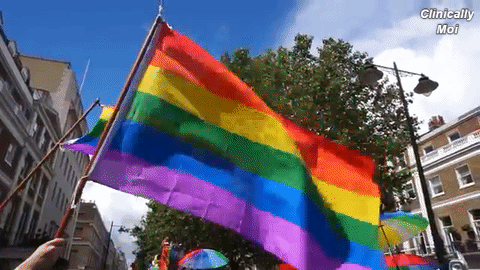
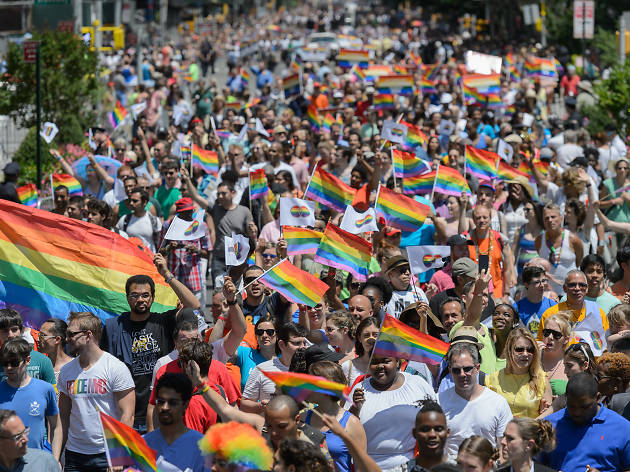
However, even though the Holy See clarified its
position, religion is often the source of
discrimination. In 2018, we published “All We Want Is
Equality,” a report about how religious exemptions are
used to discriminate against LGBTQ people in the United
States. I see the tension between freedom of religion
and the rights to equality and nondiscrimination in many
countries.
Violence and discrimination can start early on. Bullying
at school because of sexual orientation or gender
identity is a nasty and persistent problem. In 2001,
Human Rights Watch published “Hatred in the Hallways,” a
report on LGBTQ youth in US schools subjected to daily
abuse by their peers and even by teachers and school
administrators. These violations were compounded, we
found, by the failure of federal, state, and local
governments to enact laws protecting LGBTQ students from
discrimination and violence, effectively allowing school
officials to ignore violations of their rights.
Bullying can lead to students dropping out, self-harm,
or even suicide, so Human Rights Watch has continued to
investigate the right to education and bullying. In
2016, “Like Walking Through a Hailstorm” revisited the
problem in US schools, finding that in many states and
school districts students and teachers lack protections
from discrimination on the basis of sexual orientation
or gender identity. In others, protections that do exist
are inadequate and not enforced. We also reported on
school bullying in Japan and the Philippines. Our
reporting in Japan prompted a change in government
policy, and recently Japanese schools introduced
uniforms designed to respect gender expression by
allowing students to choose their attire.
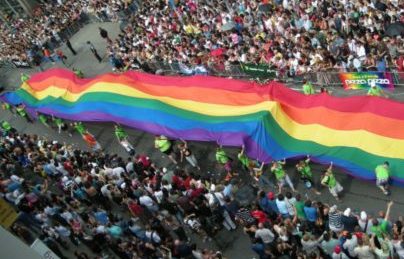
The persecution can persist. In more than 70 countries
same-sex sexual intimacy is a crime. And in many
countries where it is not expressly forbidden, there are
often laws or policies that make life for LGBTQ people
very difficult. In Russia, for instance, the "gay
propaganda" law is used to impose fines on people who
publicly display positive information on homosexuality.
Fortunately, there are positive examples. Mozambique
decriminalized homosexual conduct in 2015. The Supreme
Court of Belize declared the sodomy law unconstitutional
in 2016. And in Trinidad and Tobago the High Court of
Justice ruled in 2018 that the laws criminalizing
same-sex intimacy are unconstitutional. The Indian
Supreme Court could soon strike down a 158-year-old
colonial-era law that makes “carnal knowledge against
the order of nature” illegal. This would be a huge step
forward for a country with more than 1.3 billion people
that would, as a matter of law, respect the dignity and
the rights of LGBTQ people.
Some of these gains were supported by strong leadership
at the UN from then-Secretary-General Ban Ki-moon. He
addressed sexual orientation and gender identity
prominently in speeches, becoming a staunch supporter of
LGBTQ rights. Even in meetings with homophobic African
leaders he talked about the need to decriminalize
same-sex sexual activities. Under Ban’s watch, the UN
Human Rights Council passed two resolutions in favor of
LGBTQ rights and created a new position of independent
expert on sexual orientation and gender identity.
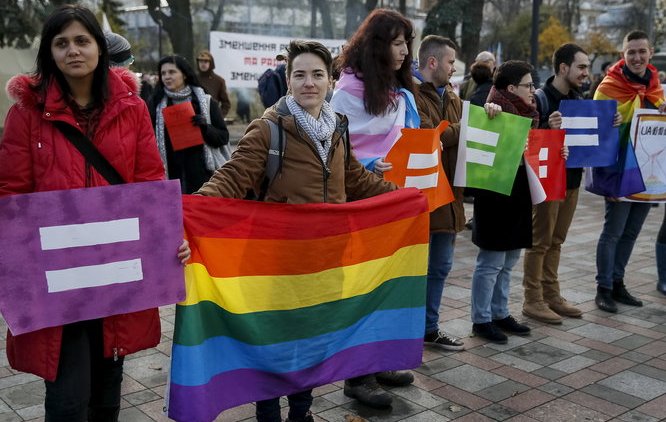
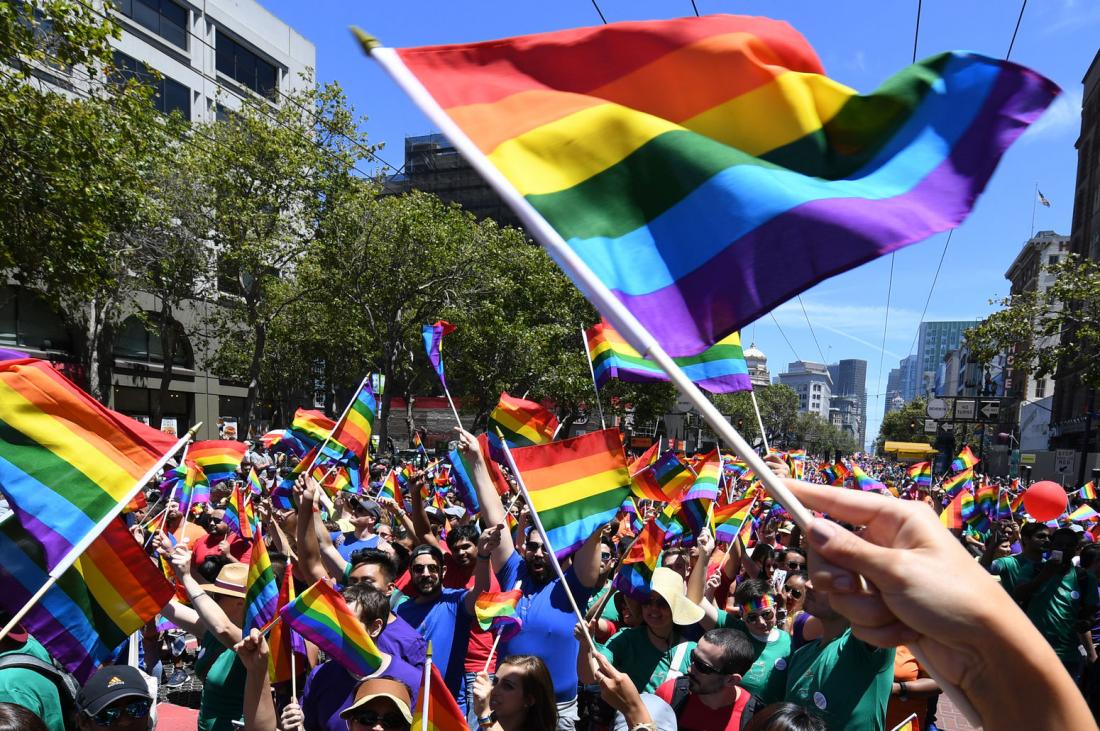
Over this past decade I have seen transgender activists
become more vocal and influential, especially around
getting governments to recognize gender without imposing
harmful requirements. At the request of Dutch activists,
Human Rights Watch undertook research on the legal
situation for trans people in the Netherlands, which is
often praised for being at the forefront of LGBTQ
rights. We found that Dutch law forced transgender
people to undergo sex-reassignment surgery, hormone
treatment, and psychiatric evaluation before being
allowed to obtain identification documents reflecting
their gender identity. In 2011 we presented our report
to the Dutch government, highlighting a new Argentinean
gender recognition law as a great example. Three years
later, the new Dutch law doing away with these
requirements came into effect.
And intersex activists have pushed a new human rights
issue on to the policy agenda of medically unnecessary
surgery performed on intersex children without their
consent. Together with InterAct, a US group, we
investigated this practice in the US in a 2017 report,
“I Want to Be Like Nature Made Me.” Such medically
unnecessary surgery occurs in many countries. In August
2018, California’s legislature passed a resolution that
supports the autonomy of intersex people and their right
to decide about cosmetic surgical alteration.
And who could forget the incredible developments toward
marriage equality? When I was a member of the Dutch
parliament in the 1990s, my resolutions to legalize
same-sex marriage were adopted by the majority. It took
seven years, but in 2001 the Netherlands became the
first country in the world where same-sex couples could
get married. Seventeen years later, 25 countries have
marriage equality, and Austria and Taiwan are expected
to follow in 2019.
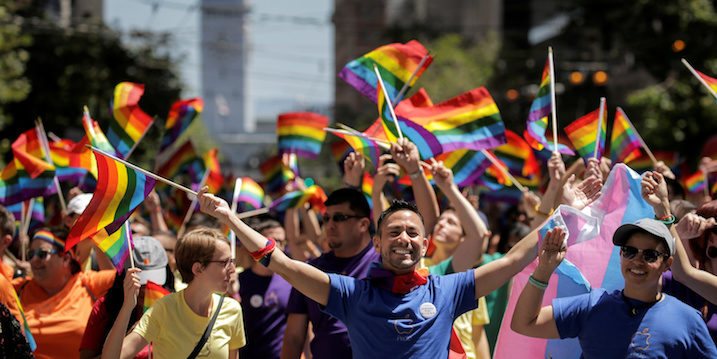
All these positive steps have come through the tenacity
and perseverance of many LGBTQ activists and their
allies, often in very difficult circumstances. I am so
proud to have worked with them and to have been part of
this inspiring movement.
For me, the circle is almost complete. After my
political career in the House of Representatives of the
Netherlands I joined Human Rights Watch. And now, after
more than 11 years as the LGBTQ advocacy director, I
will start campaigning for a seat in the Dutch Senate. I
hope to be elected in 2019.
The future is not in front of us, it’s inside of us.
[Source:
Boris Dittrich, LGBTQ Rights Advocacy Director, Human
Rights Watch, August 2018]
The Future Is Not In Front of Us, It's Inside of Us
World Wide Pride Celebrations
Pew Research Center: Global Divide on Homosexuality
Info: LGBTQ International Issues
LGBTQ Rights in Europe
Marriage Equality Worldwide
Info: LGBTQ
Discrimination
Best and Worst European Countries for LGBTQ Rights
9-10 Year Old
LGBTQ Kids
A new study finds a "sizable" number of LGBTQ 9 and 10
year old kids. Apparently awareness of gay, lesbian,
bisexual, and trans identity comes earlier than
expected. A San Diego State University research team has
uncovered groundbreaking findings regarding LGBTQ
identity and childhood development.
This new study found that 1 percent of 9 and 10
year-olds self-identify as gay, lesbian, bisexual, or
transgender. The surprising findings were published in
the latest issue of JAMA Pediatrics. The article, "Child
Sexual Orientation and Gender Identity in the Adolescent
Brain Cognitive Development Cohort Study," was
coauthored by researchers Jerel P. Calzo and Aaron J.
Blashill. "One percent is sizable, given that they are
so young," Blashill said in a release published in
Medical Xpress.
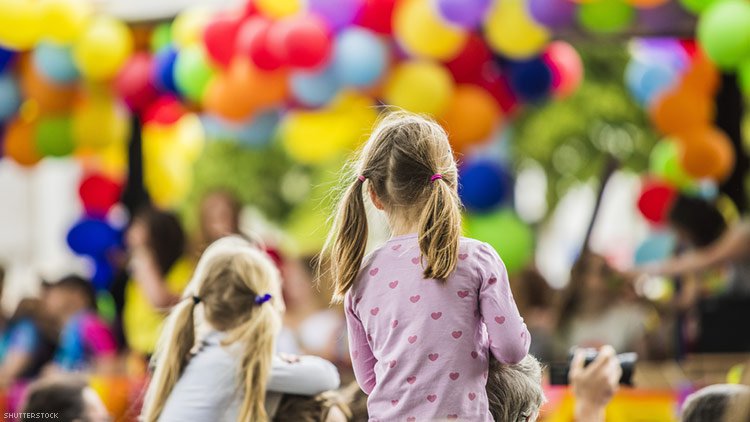
The researchers collected their data from the Adolescent
Brain Cognitive Development (ABCD) Study, a landmark
study funded by the National Institutes of Health that
tracks brain development in children over the long term.
ABCD surveyed thousands of children across the United
States, and the SDSU researchers drew from those
surveyed in 2016 and 2017.
The findings, researchers said, could lead to a greater
understanding of the development of human sexuality.
"For so long, social scientists have assumed that there
is no point in asking kids at this age about their
sexual orientation, believing they do not have the
cognitive ability to understand," Blashill said. "This
is the first study to actually ask children about their
sexual orientation this young. It is important to have a
baseline to understand how sexuality develops and how it
may change over time."
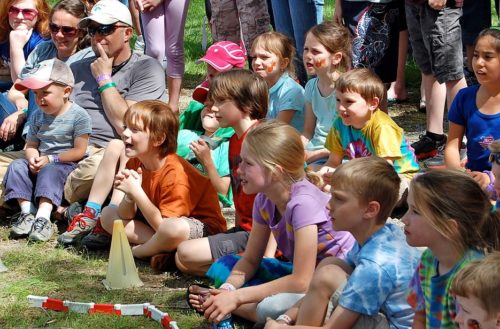
Since LGBTQ youth are more at-risk for physical and
mental health issues than their straight peers, this
research could help save lives. Notably, a 9-year-old
took his own life last month after coming out as gay to
his classmates and being bullied, although it's
impossible to know exactly what factors contributed to
his suicide. "If we can understand identity development
earlier and can track development using large datasets,
we can begin improving research and prevention around
risk and protective factors," Calzo said.
The ABCD data is notable for also including parents in
its survey. The SDCU team found that 7 percent of
parents believed their child may be gay. 1.2 percent
said their child may be transgender.
[Source: Advocate Magazine, Daniel Reynolds, September
2018]
Study Finds Sizable Number of LGBTQ 9 Year Old Kids
Info:
LGBTQ Kids
New Study: 9-10 Year Old Kids Identifying as Gay
Can 9 Year Old Kids Know They Are Gay?
Sexual Orientation: What
Scientists Know and Do Not Know
Over the last 50 years,
political rights for lesbian, gay, and bisexual (LGB)
individuals have significantly broadened in some
countries, while they have narrowed in others. In many
parts of the world, political and popular support for
LGB rights hinges on questions about the prevalence,
causes, and consequences of non-heterosexual
orientations.
In a new report, a team
of researchers bring the latest science to bear on these
issues, providing a comprehensive review of the
scientific research on sexual orientation.
"We wanted to write a
comprehensive review that was state of the art.
In doing so, we also wanted to correct important
misconceptions about the link between scientific
findings and political agendas," explains psychology
researcher and lead author J. Michael Bailey of
Northwestern University.
 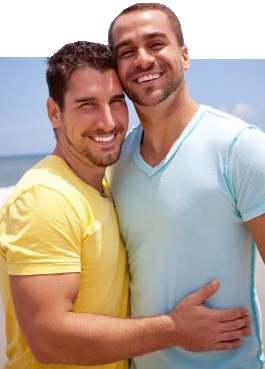
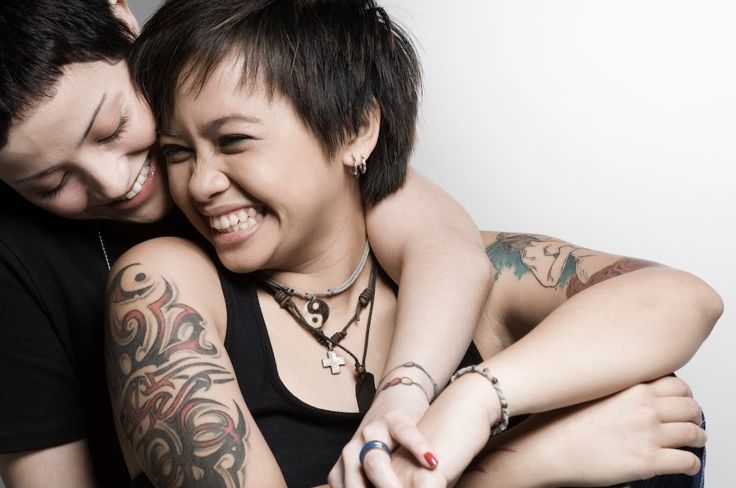
The report is published
in Psychological Science in the Public Interest, a
journal of the Association for Psychological Science,
and is accompanied by a commentary by psychological
scientist Ritch Savin-Williams of Cornell University.
Based on their review of
the latest science, Bailey and colleagues draw several
conclusions about the nature of sexual orientation:
--Across cultures, a
"small but nontrivial" percentage of people have
non-heterosexual feelings. The specific expression of
sexual orientation varies widely according to cultural
norms and traditions, but research suggests that
individuals' sexual feelings are likely to develop in
similar ways around the world.
--Men's and women's
sexual orientations manifest in different ways: Men's
sexual orientation is more closely linked to their
patterns of sexual arousal than women's sexual
orientation is.
--Various biological
factors (including prenatal hormones and specific
genetic profiles) are likely to contribute to sexual
orientation, though they are not the sole cause.
Scientific evidence suggests that biological and
non-social environmental factors jointly influence
sexual orientation.
--Scientific findings do
not support the notion that sexual orientation can be
taught or learned through social means. And there is
little evidence to suggest that non-heterosexual
orientations become more common with increased social
tolerance.
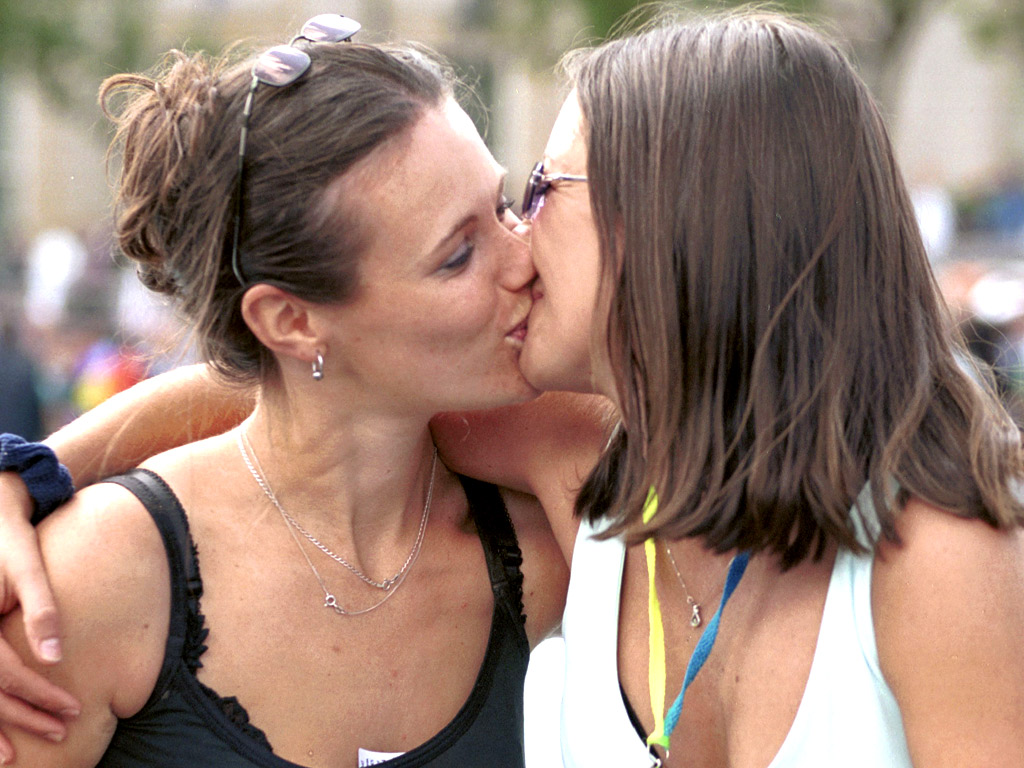

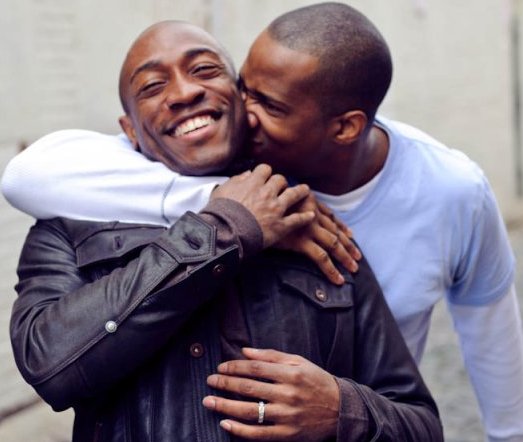
Despite these points of
consensus, some aspects of sexual orientation are not as
clear-cut. While Bailey and colleagues describe sexual
orientation as primarily falling into categories
(lesbian, gay, bisexual), Savin-Williams argues that
considerable evidence supports a sexual continuum. He
notes that the label “bisexual” serves as a catchall for
diverse sexual orientations that fall in between
heterosexual and homosexual. As a result, his estimate
of the prevalence of the non-heterosexual population is
double that of Bailey and colleagues.
From their review, the
authors also conclude that gender nonconformity in
childhood (behaving in ways that do not align with
gender stereotypes) predicts non-heterosexuality in
adulthood. According to Savin-Williams, the degree to
which this is true could be a consequence of how study
participants are typically recruited and may not be
accurate among more representative samples of
non-heterosexual individuals.
The report authors and
Savin-Williams agree on most issues, including that a
major limitation of existing research relates to how
sexual orientation is measured. Most researchers view
sexual orientation as having several components
(including sexual behavior, sexual identity, sexual
attraction, and physiological sexual arousal) and yet,
the majority of scientific studies focus solely on
self-reported sexual attraction. The decision to use
these self-report measures is typically made for
pragmatic reasons, but it necessarily limits the
conclusions that can be drawn about how different
aspects of sexual orientation vary by individual, by
culture, or by time.
Additionally, individual
and cultural stigma likely results in underreporting of
non-heterosexual behaviors and orientations across the
board.
Perhaps the most
prominent question in political and public debates is
whether people can "choose" to have non-heterosexual
orientations. Because sexual orientation is based on
desire and we do not "choose" our desires, the authors
argue, this question is illogical.
Ultimately, these kinds
of debates come down to moral issues, not scientific
ones: "People have often thought unclearly about sexual
orientation and the political consequences of research,"
Bailey adds. "The question of whether sexual orientation
is 'chosen' has divided pro-gay and anti-gay forces for
decades, but the question of causation is mostly
irrelevant to the culture wars."
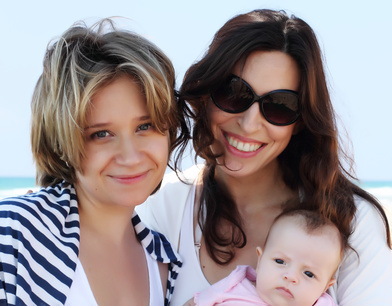
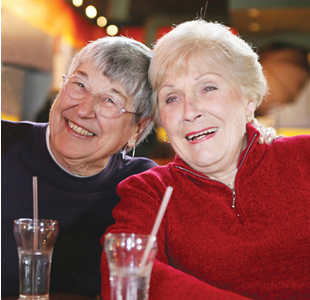
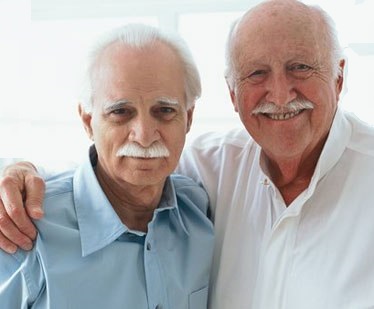
The fact that issues
related to sexual orientation continue to be hotly
debated in the public arena underscores the need for
more and better research.
"Sexual orientation is an
important human trait, and we should study it without
fear, and without political constraint," Bailey argues.
"The more controversial a topic, the more we should
invest in acquiring unbiased knowledge and science is
the best way to acquire unbiased knowledge."
[Source: Association for
Psychological Science]
Government Report: LGBTQ Youth Information
National Alliance on Mental Illness: LGBTQ Issues
Info: LGBTQ Data and Statistics
American
Psychological Association: Information on LGBTQ
Community
Foundation for Better Understanding: The
Health of LGBTQ People
Info: Sexual Orientation
Human Rights Watch: Doctors Need Intersex
Care Standards
Research Report: LGBTQ
Leisure Activities
Info: Origins of Homosexuality
HRW Report: Discrimination Against LGBTQ
Youth in US Schools
Info: Sex and Gender
APA: Sexual Orientation, Homosexuality
Info: LGBTQ Community
Sex
Education in Public Schools
According to GLSEN
and other national LGBTQ advocacy organizations, a lack
of comprehensive sex education in public schools is
putting LGBTQ youth at risk. GLSEN and other national
organizations issued a call for action to improve
programs and policies.
GLSEN, in partnership
with Advocates for Youth, Answer, the Human Rights
Campaign (HRC) Foundation, Planned Parenthood Federation
of America (PPFA), and the Sexuality Information and
Education Council of the US (SIECUS), called for
significant improvements in sex education programs to
ensure that lesbian, gay, bisexual, transgender, queer
and questioning (LGBTQ) youth have access to information
crucial to their health and well being. Sixty-one
additional organizations signed a letter in support of
this call to action.
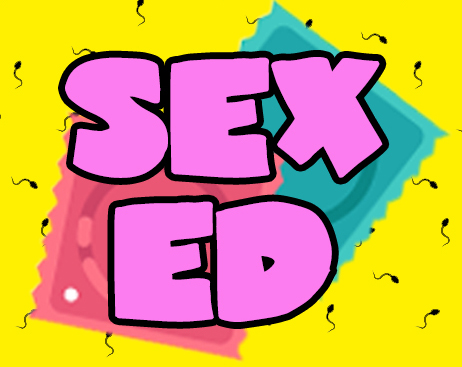


Their document, A Call to Action: LGBTQ Youth Need
Inclusive Sex Education, urges educators, advocates,
and policymakers to take immediate, concrete steps to
provide LGBTQ inclusive education for all students
--from crucial guidance for LGBTQ students on protecting
themselves from HIV and other sexually transmitted
infections, to ensuring safe, supportive environments in
which to learn about their sexual health. Programs that
overlook LGBTQ students, or worse, stigmatize and
stereotype them, contribute to unsafe school
environments.
“As the leading national education organization working
to create safe and affirming schools for LGBTQ students,
GLSEN has long been committed to ensuring all schools
include LGBTQ people, events and history in their
curriculum, which our research shows helps to create
positive school climates and better educational outcomes
for LGBTQ students,” said Dr. Joe Kosciw, GLSEN’s Chief
Research and Strategy Officer. “Health and sexual
education courses are one of the most natural and common
classes in which students can learn about LGBTQ topics
in a positive way; however, less than five percent of
LGBTQ students were taught about LGBTQ topics in a
positive way in health class. In fact, eight states
prohibit schools from providing this vital, life-saving
information. This sends a dangerous message to LGBTQ
students, along with their non-LGBTQ peers, that they
are not an equal and valued part of the school
community.”
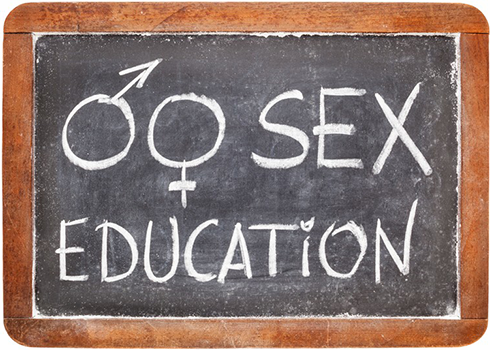
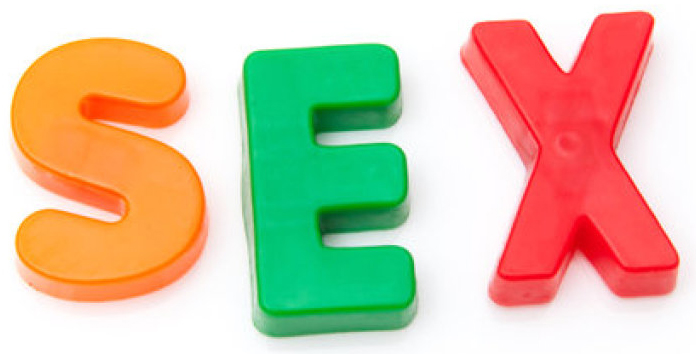
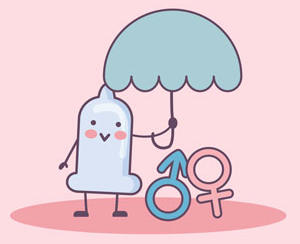
Data from a range of sources including the Centers for
Disease Control and Prevention, researchers and
professional organizations show how few sex education
programs are inclusive of LGBTQ youth. Only 19 percent
of US secondary schools provide curricula or
supplementary sex education materials that are LGBTQ-inclusive.
Fewer than five percent of LGBTQ students have health
classes that included positive representations of LGBTQ-related
topics. This leaves many LGBTQ youth without the skills
to maintain healthy relationships and protect themselves
if they are engaging in sexual activity. This call to
action for inclusive sex education comes at a critical
time, when different groups within the LGBTQ youth
community are:
--More likely to have begun having sex at an early age
and to have multiple partners compared to their
heterosexual peers
--More likely to have sex while under the influence of
alcohol or other drugs
--More likely to experience dating violence
--Less likely to use condoms or birth control when they
have sex
--More likely to contract HIV or other STIs
--More likely to experience teen pregnancy
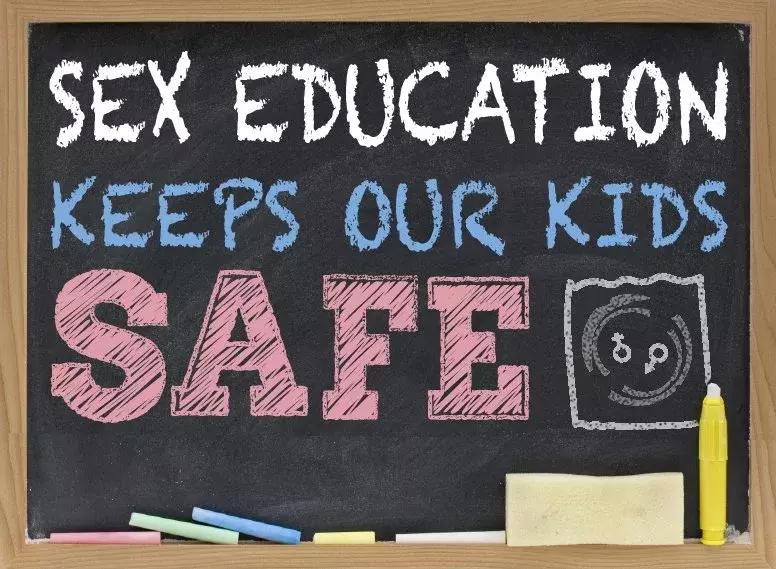
 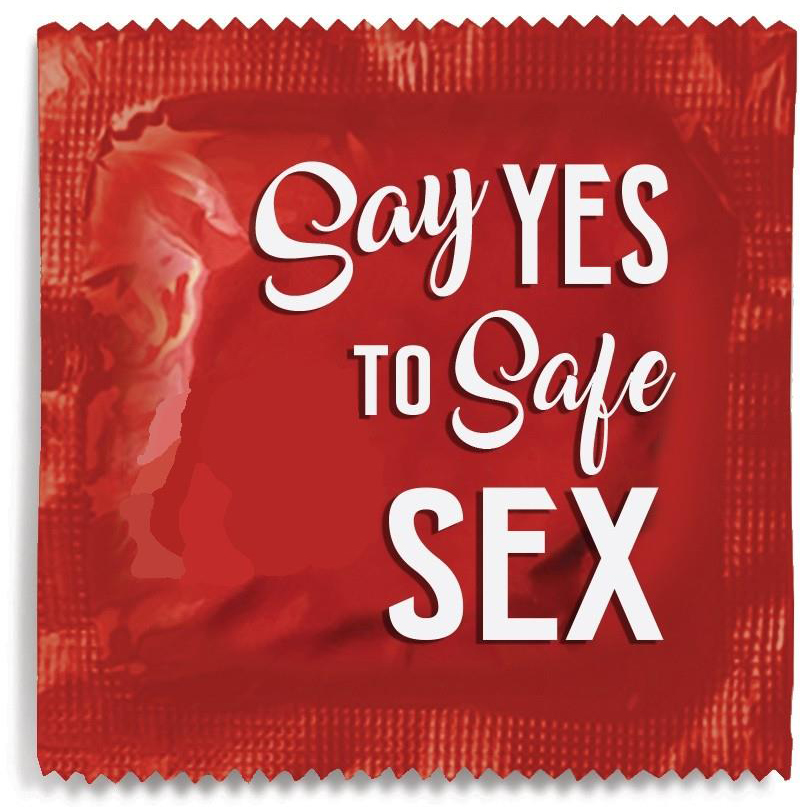
Studies show that parents, health professionals and
experts, as well as youth, express high levels of
support for LGBTQ-inclusive sex education. Advocates for
Youth, Answer, GLSEN, the Human Rights Campaign
Foundation, Planned Parenthood Federation of America,
and the Sexuality Information and Education Council of
the US (SIECUS) call on advocates and policymakers to
require and fund LGBTQ-inclusive sex education; and on
educators to make schools safe and affirming spaces for
LGBTQ youth and provide inclusive sex education programs
that empower all youth to take care of their sexual
health.
[Source:
GLSEN, December 2015]
Call to Action: Inclusive Sex Education Needed in Public
Schools
The Atlantic: The Power of Inclusive Sex Education
Info: Safe Sex
HRC: LGBTQ Youth Need Inclusive Sex Education
Full Report: LGBTQ Youth Need Inclusive Sex Education
Info: Educational Considerations
Doctors Need Intersex Care
Standards
Medical professional
associations should enact standards of care for intersex
children that rule out medically unnecessary surgery
before patients are old enough to consent, according to
a report released in October 2017 by Human Rights Watch
and interACT. After decades of controversy in the
medical community over the procedures, the lack of
centralized care standards allows doctors to continue
operating on children’s gonads, internal sex organs, and
genitals when they are too young to participate in the
decision, even though such surgery is dangerous and
could be safely deferred.
The 41-page report, A
Changing Paradigm: US Medical Provider Discomfort with
Intersex Care Practices, examines the controversy
over the operations inside the medical community and the
pressure on parents to opt for surgery.

Once called
“hermaphrodites,” a term now considered pejorative and
outdated, intersex people are not rare, but their needs
are widely misunderstood. Based on a medical theory
popularized in the 1960s, doctors perform surgery on
intersex children (often in infancy) with the stated aim
of making it easier for them to grow up “normal.” The
results are often catastrophic, the supposed benefits
are largely unproven, and there are rarely urgent health
considerations requiring immediate, irreversible
intervention.
“The intersex community
today is saying the same thing we were saying two
decades ago, we want doctors to care for us, not try to
‘fix’ us,” said Kimberly Zieselman, an intersex woman
and the executive director of interACT Advocates for
Intersex Youth. “We’re not anti-doctor or anti-surgery,
we’re just pro-consent and pro-honesty, especially for
children who are too young to speak or to comprehend
what’s going on around them."
As many as 1.7 percent of
babies are different from what is typically called a boy
or a girl. The chromosomes, gonads, or internal, or
external sex organs of these children differ from social
expectations. Some intersex traits (such as atypical
external genitalia) are apparent at birth. Others (such
as gonads or chromosomes that do not match the
expectations of the assigned sex) may manifest later in
life, in some cases around puberty. Any of these
children can be raised as either sex without surgery. On
the other hand, genital or gonadal surgeries on intersex
children too young to declare their gender identity
carry the risk of surgically assigning the wrong sex.
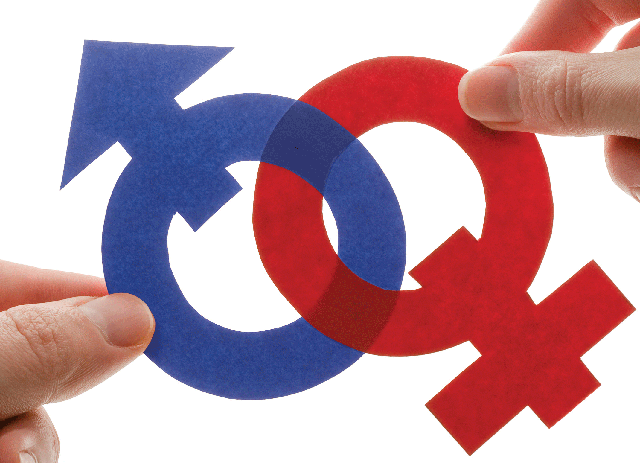
Surgery to remove gonads
can result in sterilization, and then require lifelong
hormone replacement therapy. Operations to alter the
size or appearance of children’s genitals risk
incontinence, scarring, lack of sensation, and
psychological trauma. The procedures are irreversible,
nerves that are severed cannot regrow, and scar tissue
can limit options for future surgery. While certain
surgical interventions on intersex children are
undisputedly medically necessary, some surgeons in the
US perform risky and medically unnecessary cosmetic
surgery on intersex children, often before they are even
able to talk.
Medical protocols have
evolved. It is increasingly common for
multi-disciplinary teams to treat intersex patients,
often called cases of Differences of Sex Development
(DSD.) This is a marked improvement over families
meeting solely with a surgeon. Most medical
practitioners now acknowledge that parents may prefer to
leave their child’s body intact. And while there are no
centralized standards of care for intersex children,
expert practitioners emphasize the need for change.
“Many children have
differences,” one pediatric surgeon said. “We deal with
kids with all kinds of vascular anomalies and port wine
stains, and we encourage those children to be out there,
we encourage those children to be in school. And they
are, and they do great. You can have a difference. We
don't need to necessarily create normalization to make
you safe and well-adjusted.”
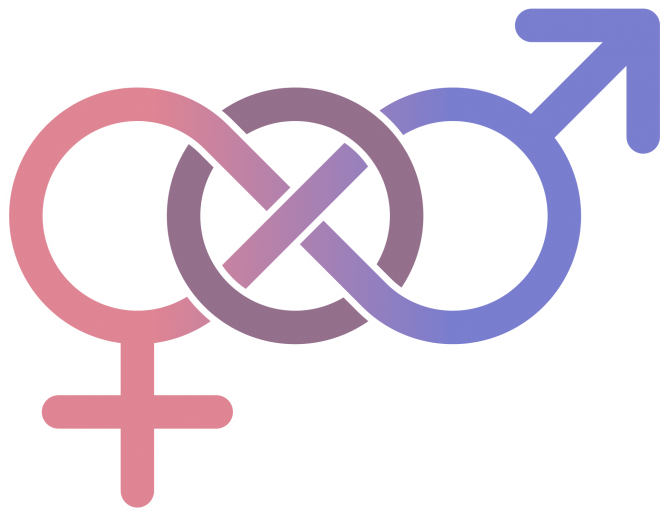
Guidelines have begun to
emerge. In 2016, the American Medical Association (AMA)
Board of Trustees issued a report recognizing that “DSD
communities and a growing number of health care
professionals have condemned genital ‘normalizing,’
arguing that except in the rare cases in which DSD
presents as life-threatening anomalies, genital
modification should be postponed until the patient can
meaningfully participate in decision making.” The board
recommended adoption of a resolution that, “except when
life-threatening circumstances require emergency
intervention, doctors should defer medical or surgical
intervention until the child is able to participate in
decision making.”
In a 2017 letter to the
AMA, the largest US support group for intersex people
and parents of intersex children, called the AIS-DSD
group, wrote: “We hope that the AIS-DSD Support Group
will be able to shift the focus of our support efforts
over time away from helping adults, youth and their
families recover from medically-induced traumas, and
toward support of the physical and psychological health
of our members, from birth to old age.”
In July 2017, three
former US surgeons-general wrote that they believed
“there is insufficient evidence that growing up with
atypical genitalia leads to psychosocial distress,” and
“while there is little evidence that cosmetic infant
genitoplasty is necessary to reduce psychological
damage, evidence does show that the surgery itself can
cause severe and irreversible physical harm and
emotional distress.”
In a statement marking
2017 Intersex Awareness Day, Physicians for Human Rights
said: “Carrying out an irreversible and medically
unnecessary surgery before a child is old enough to
meaningfully consent violates informed consent
requirements, and violates the obligation to do no
harm,” and called for an end to medically unnecessary
surgery until a child is old enough to participate
meaningfully in such decisions.
“Medical professional
bodies should demonstrate the leadership doctors look to
them for,” said Kyle Knight, Human Rights Watch
researcher and author of the report. “The American
Medical Association, the American Academy of Pediatrics,
and other specialist bodies should draw a hard line and
say that except in cases of medical necessity, surgery
on intersex children should be delayed until they can
participate in the decision themselves.”
[Source: Human Rights
Watch]
Human Rights Watch: Doctors Need Intersex
Care Standards
Info: Intersex Issues
California Denounces Corrective Surgery on Intersex
Children
Lambda Legal: Intersex Patient Rights
HOME
QUEER CAFE
│ LGBTQ Information Network │ Established 2017
|